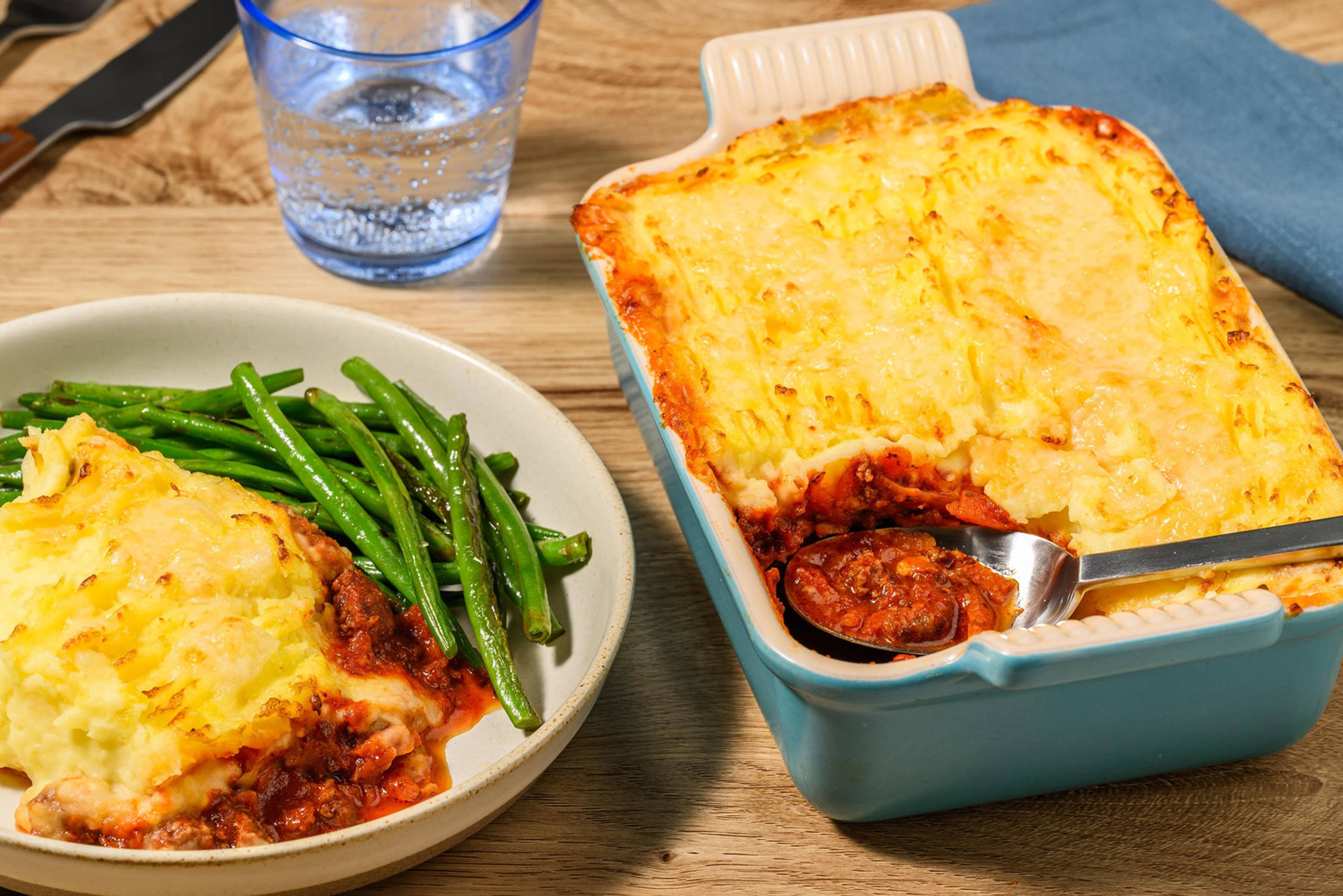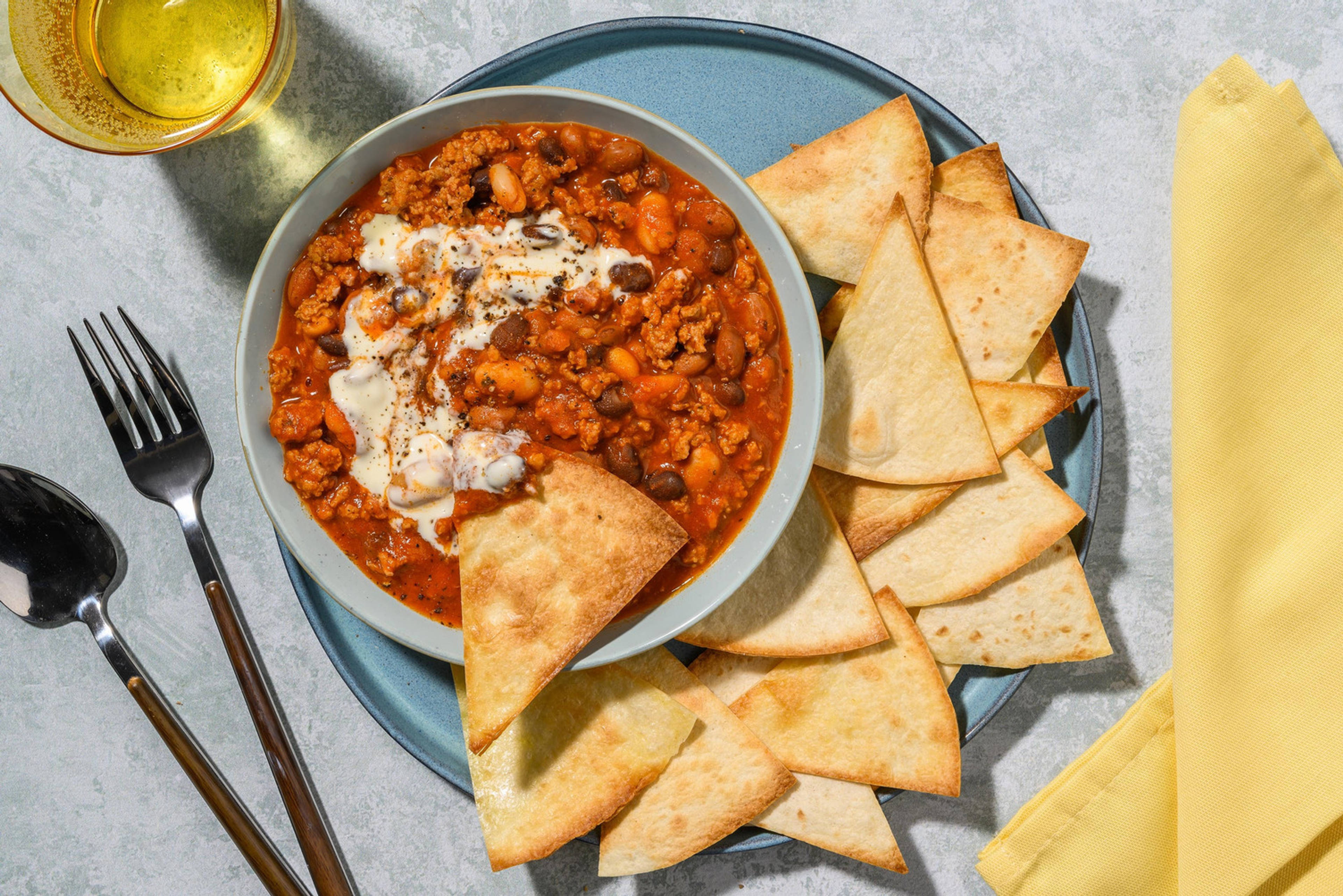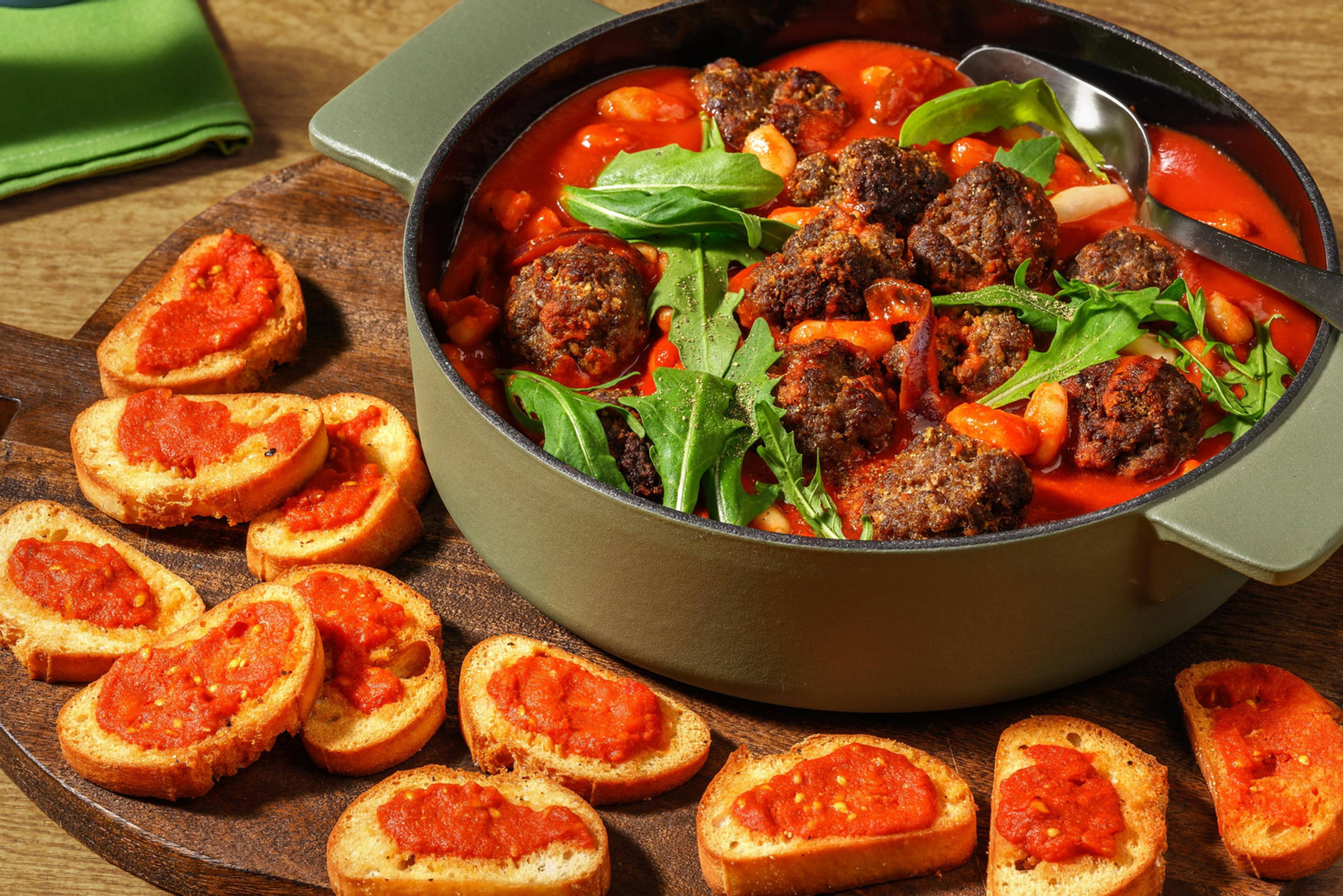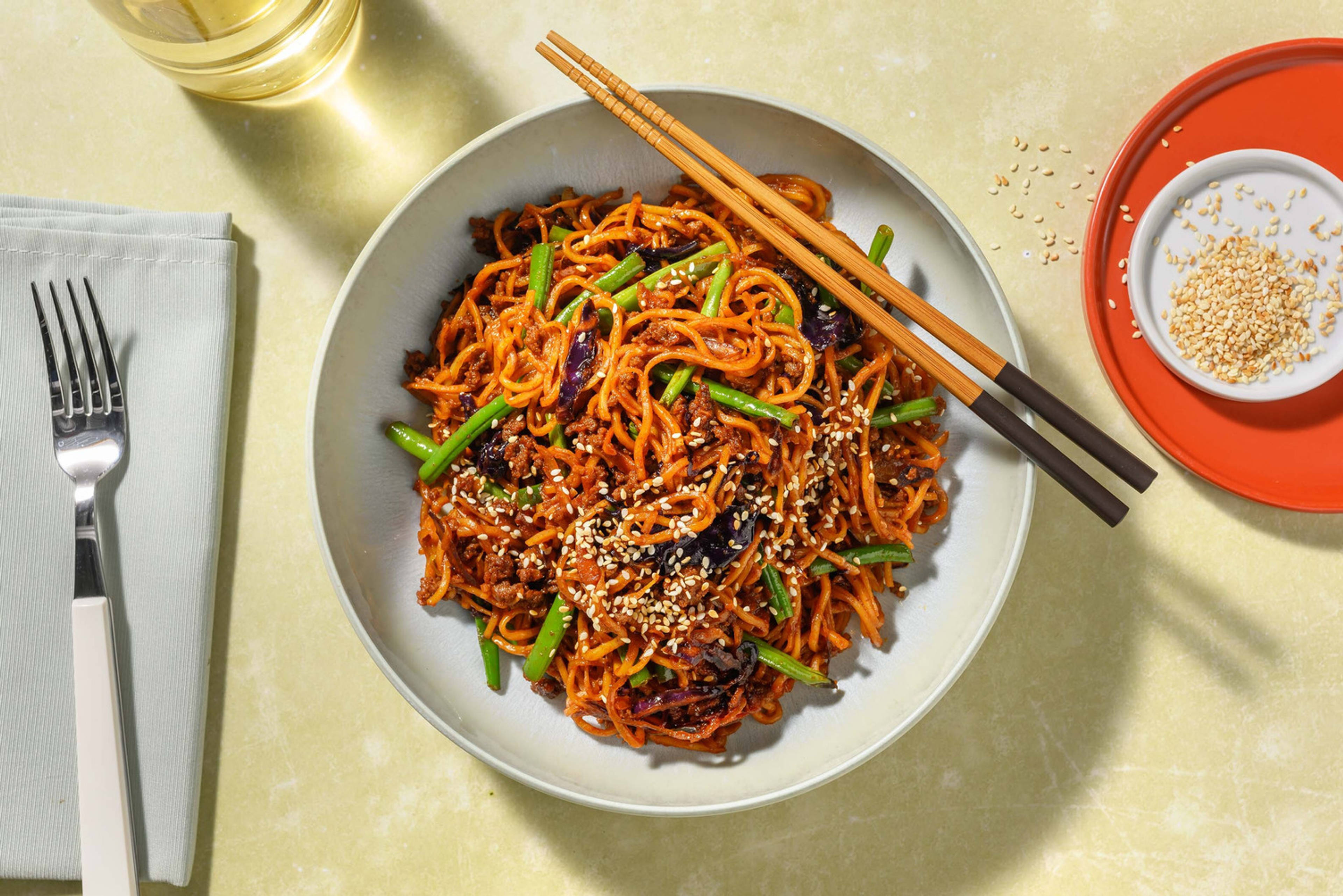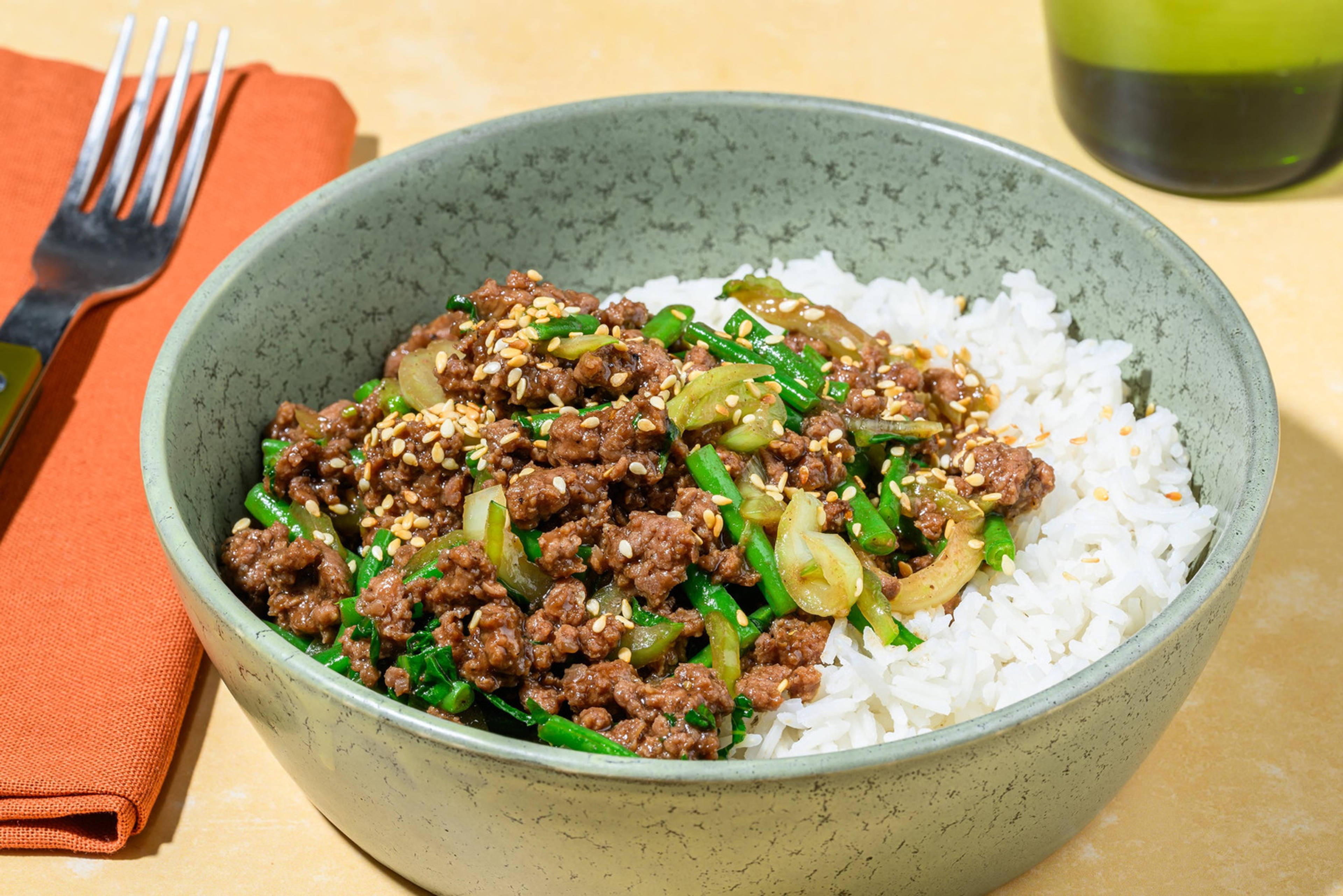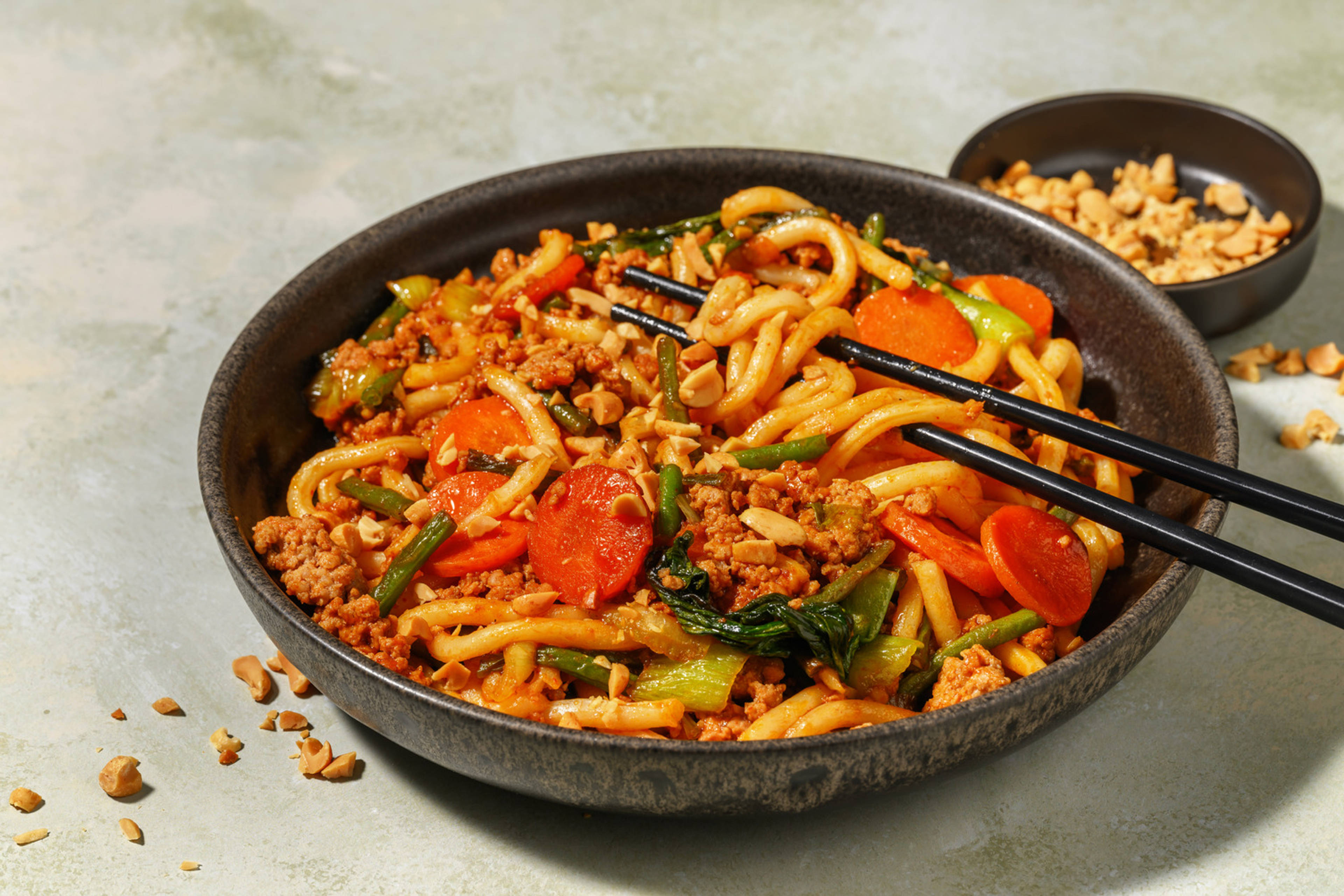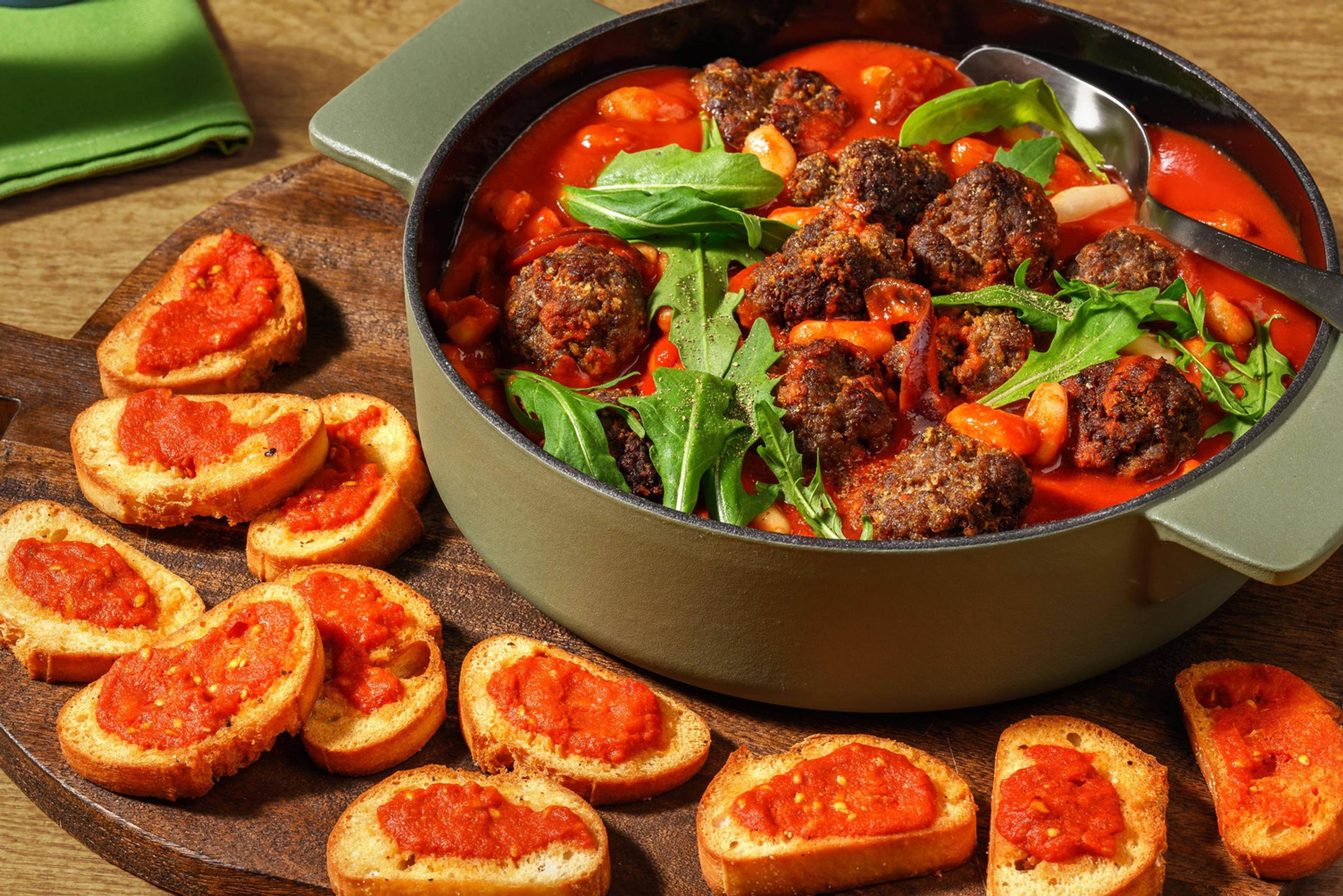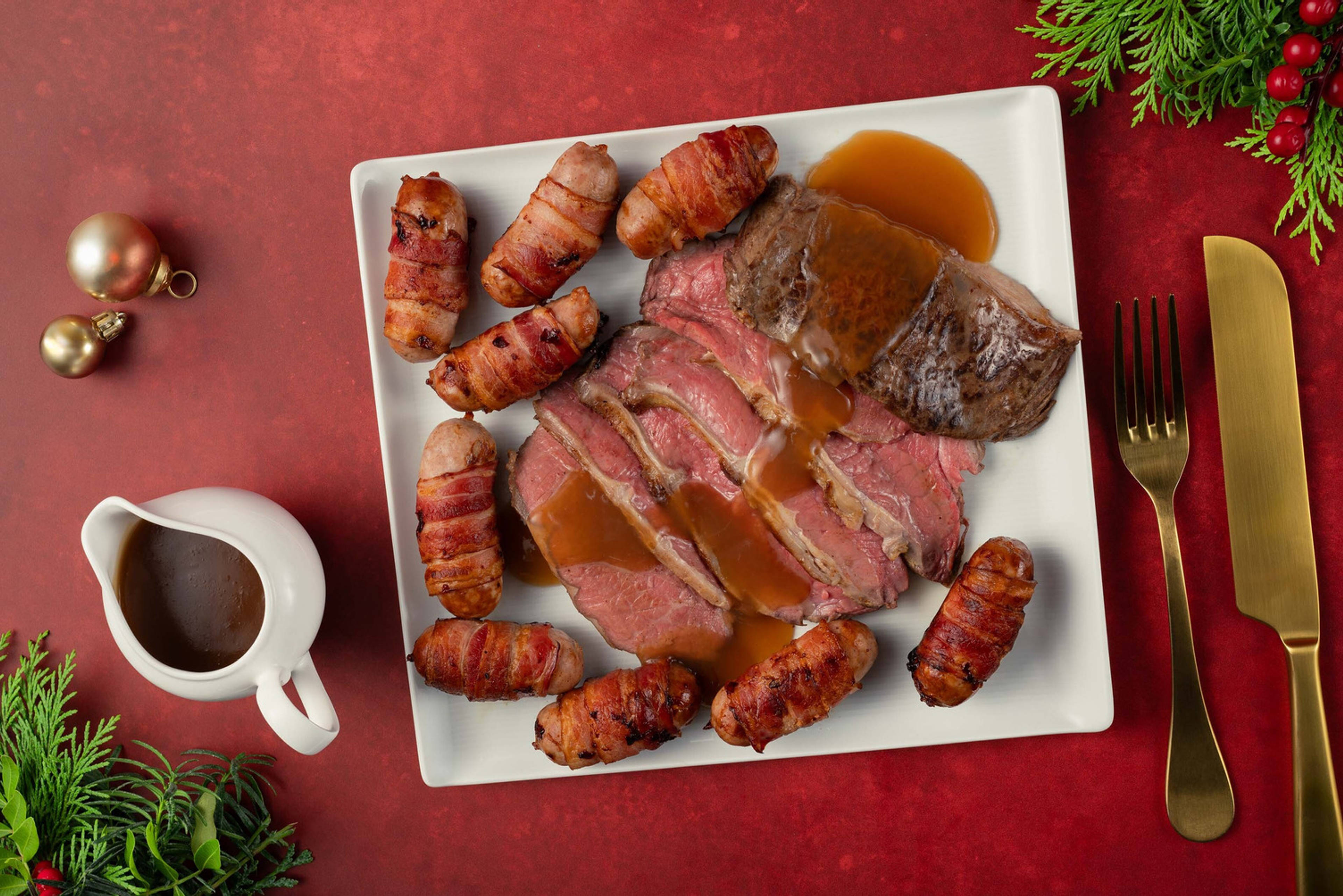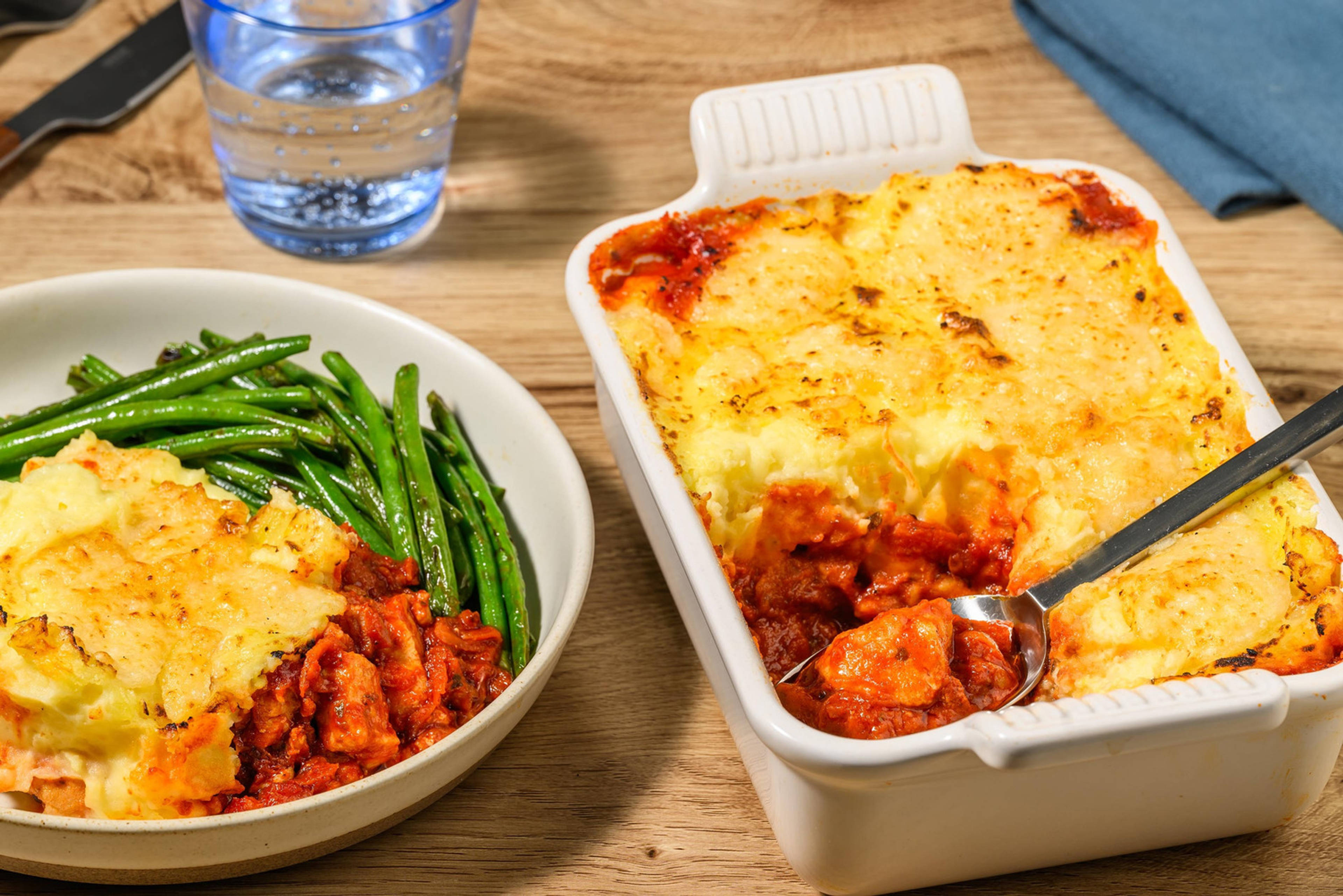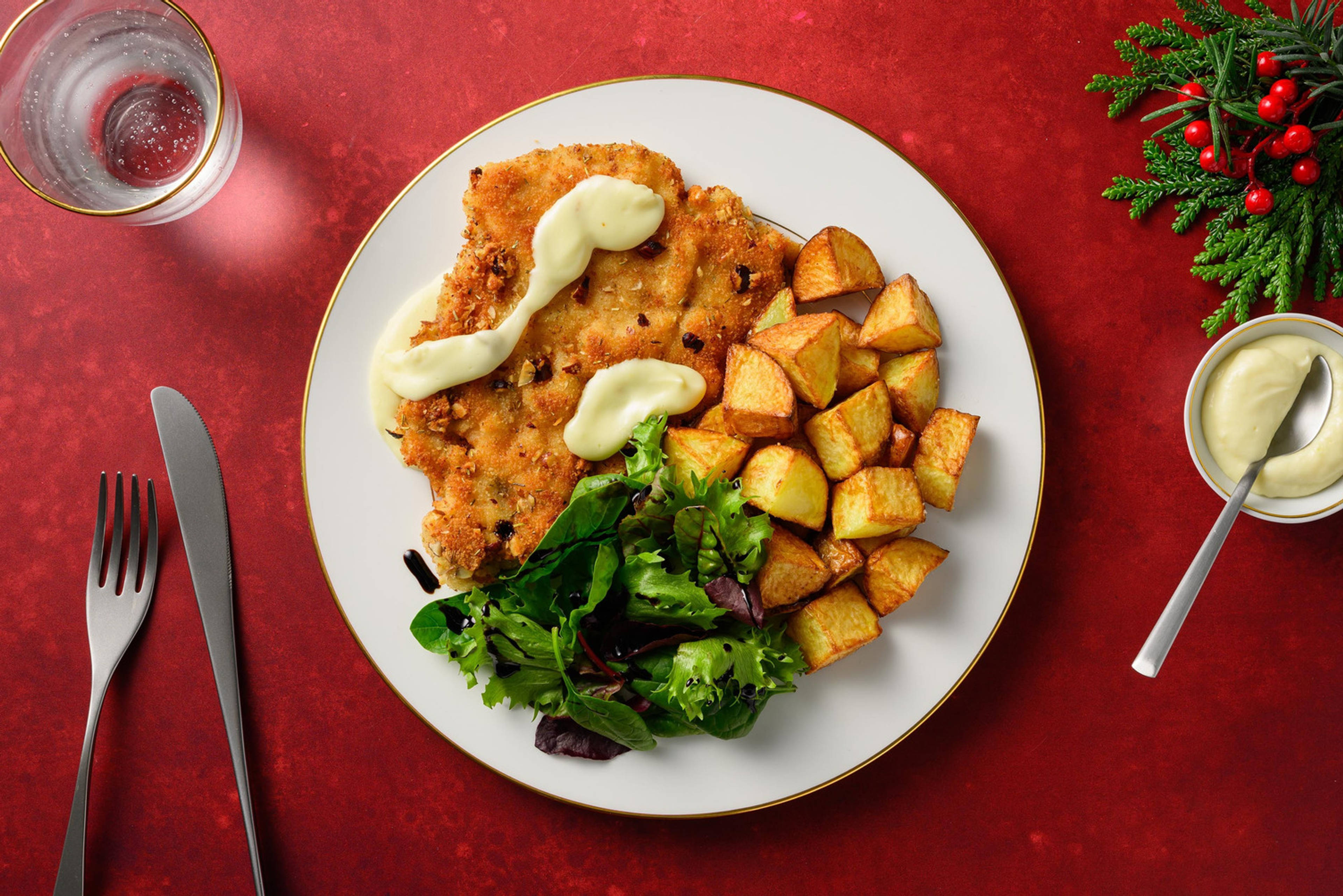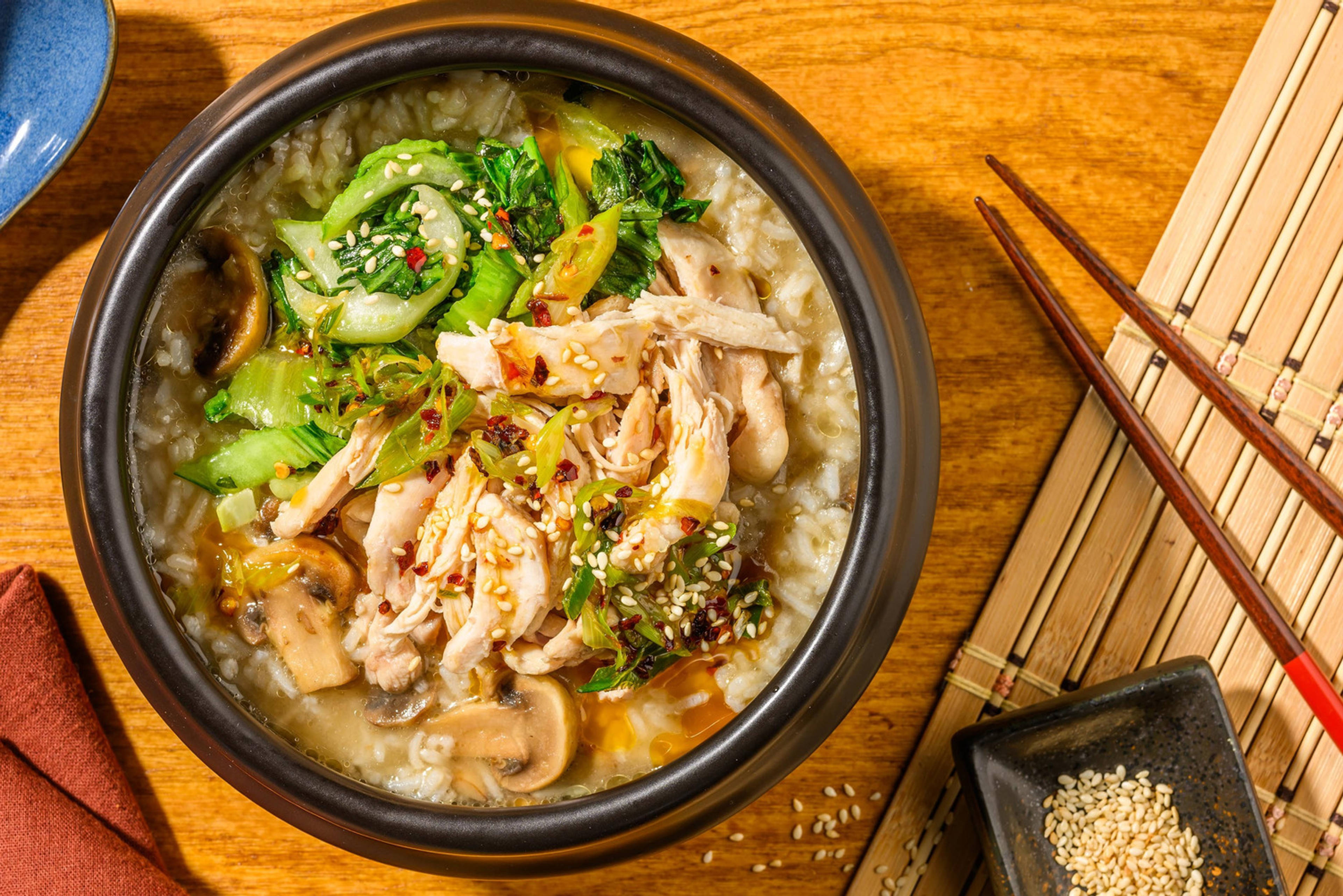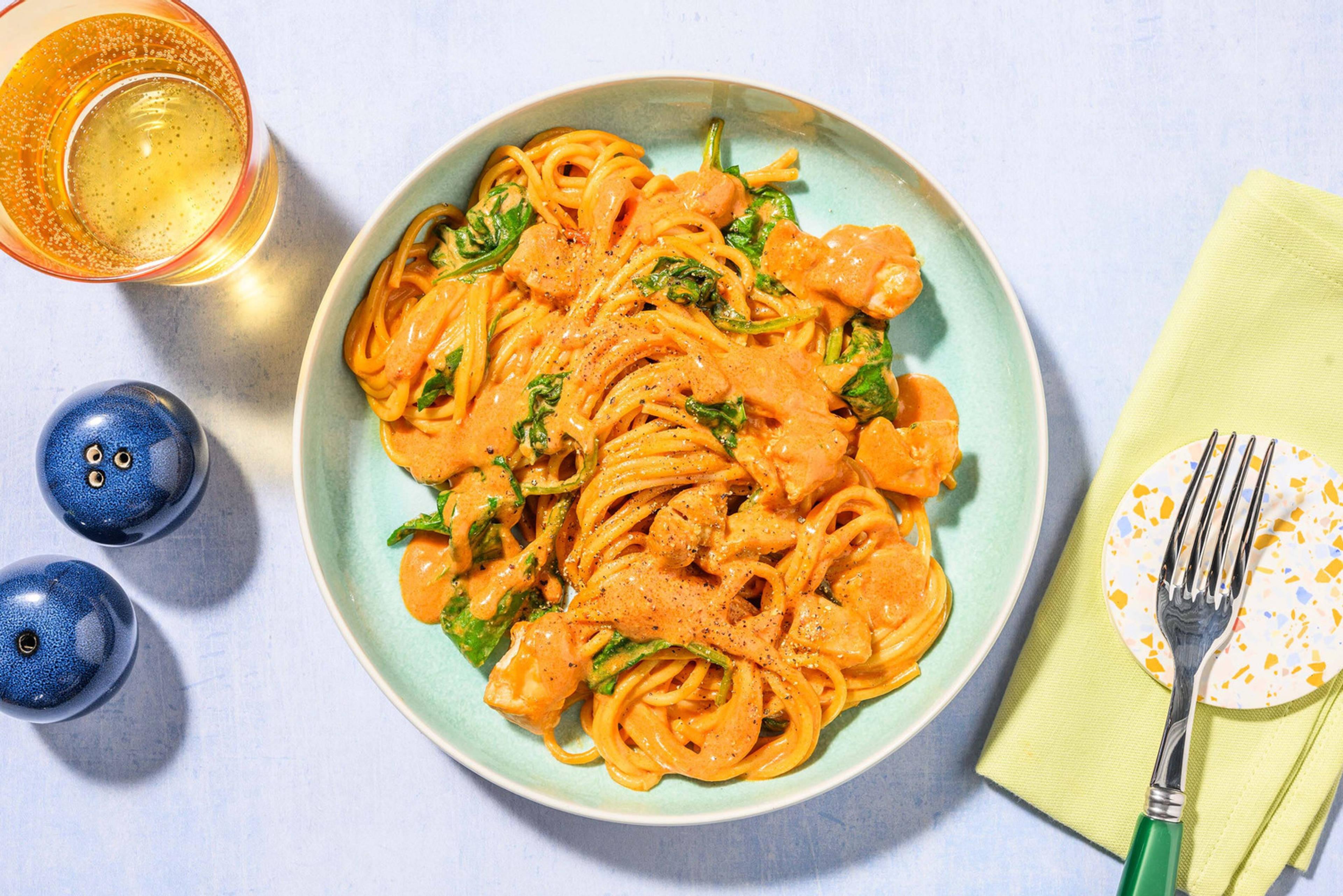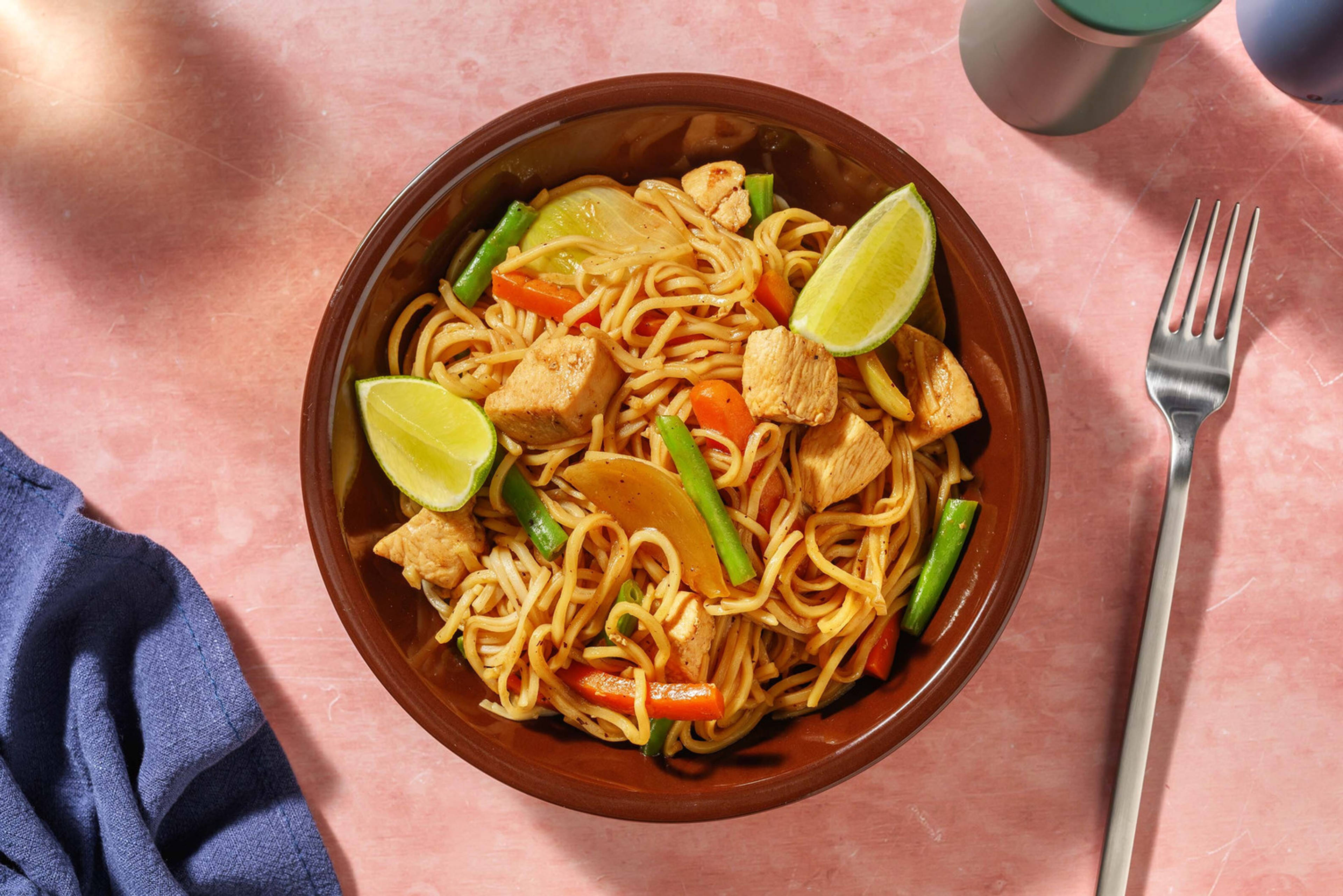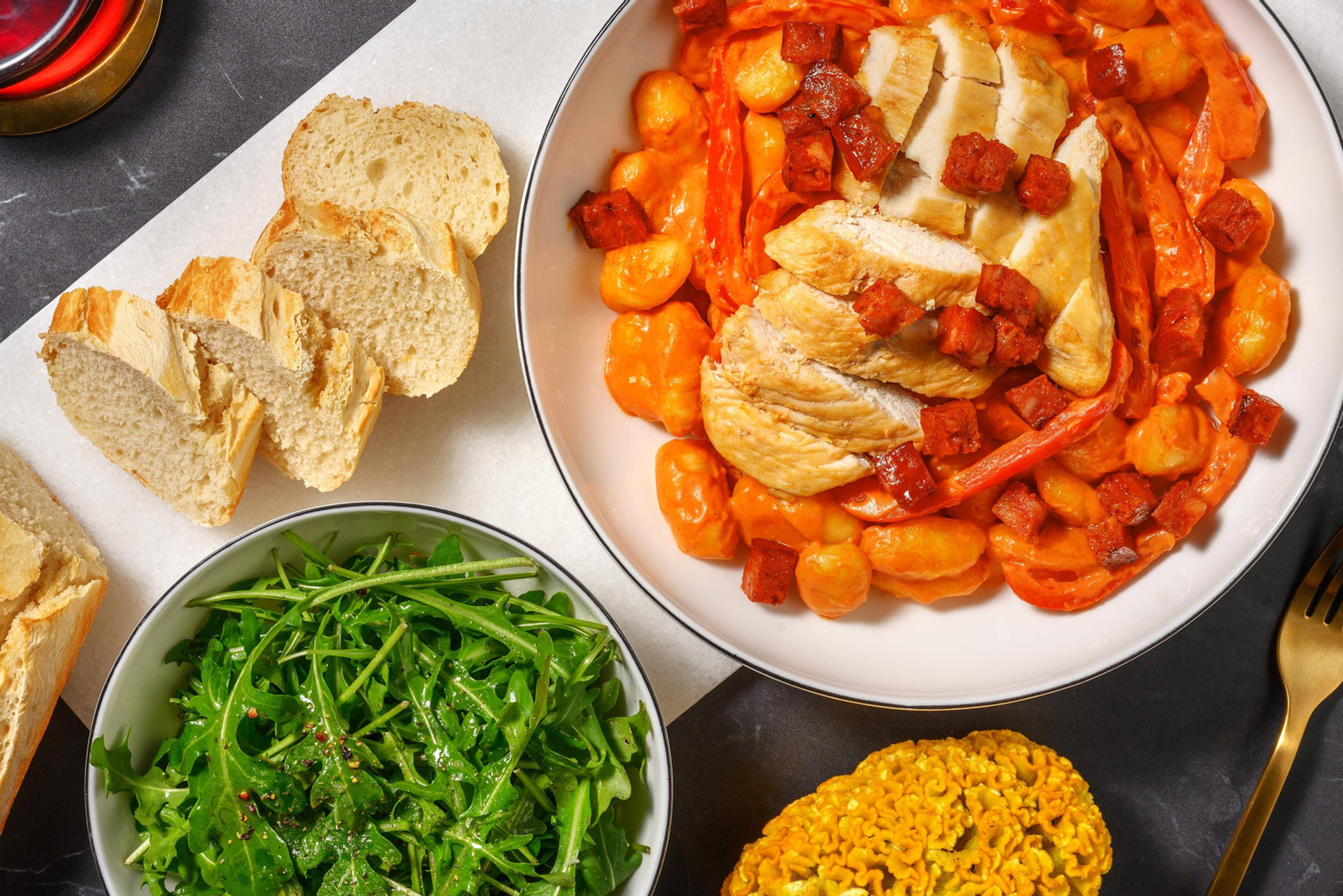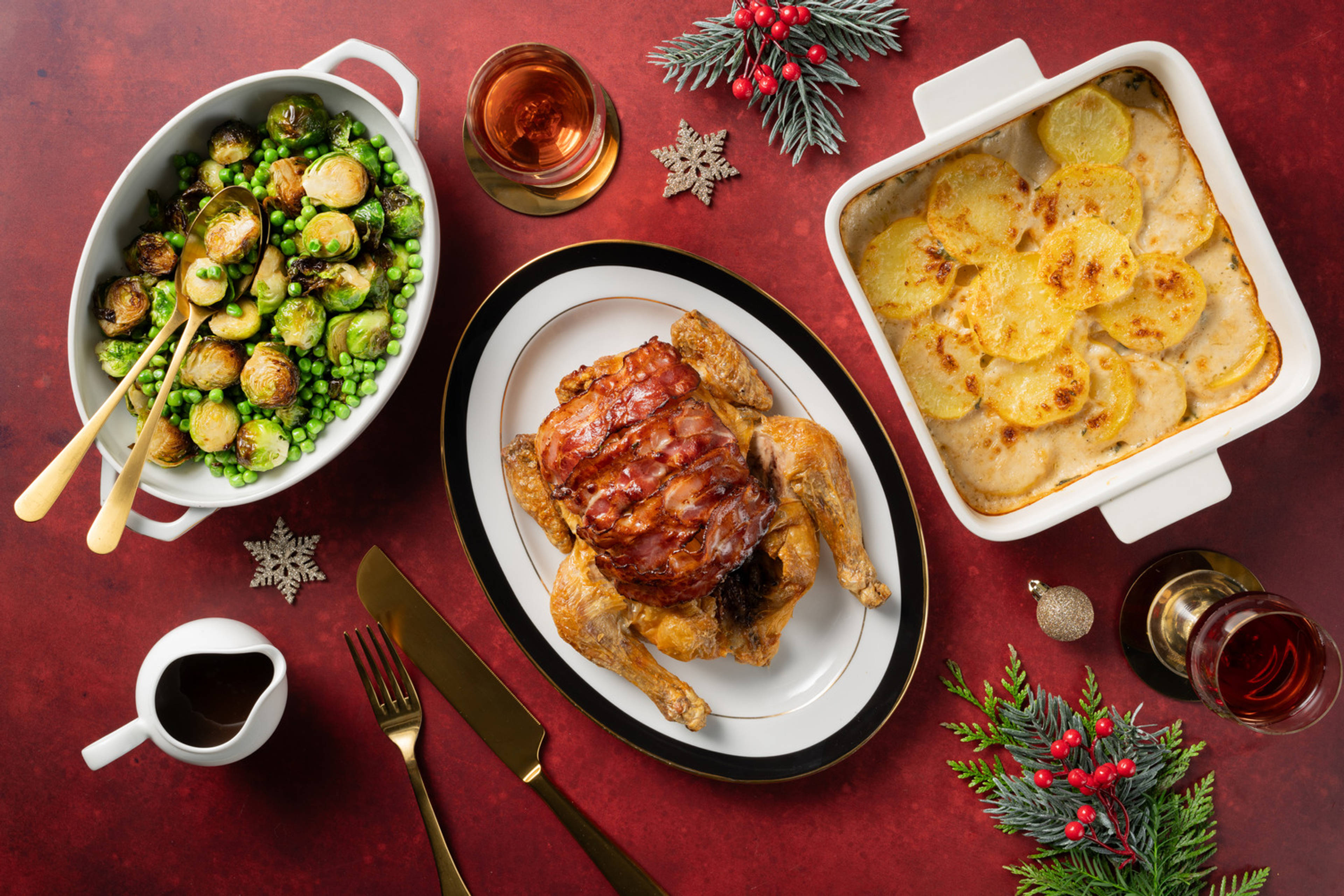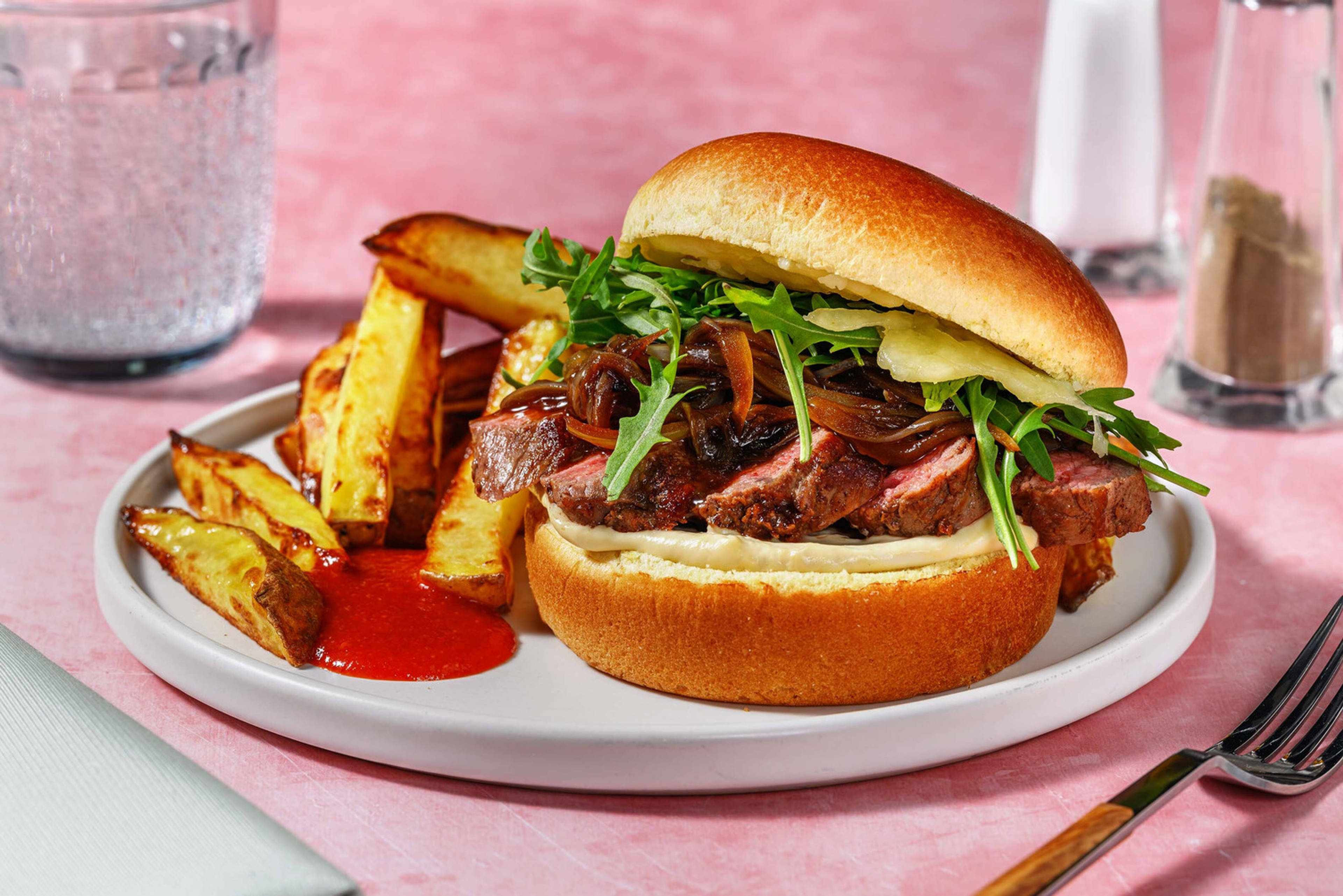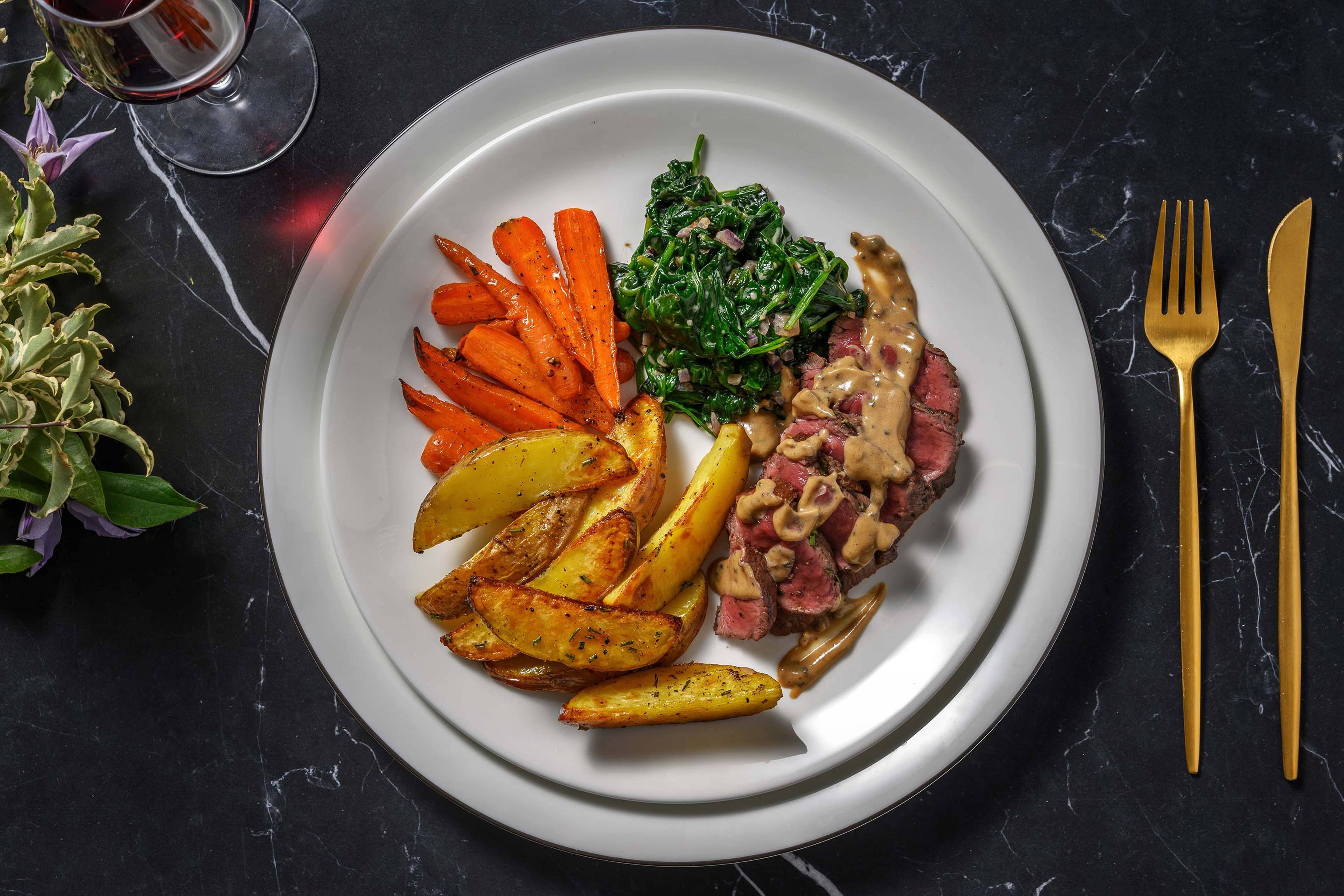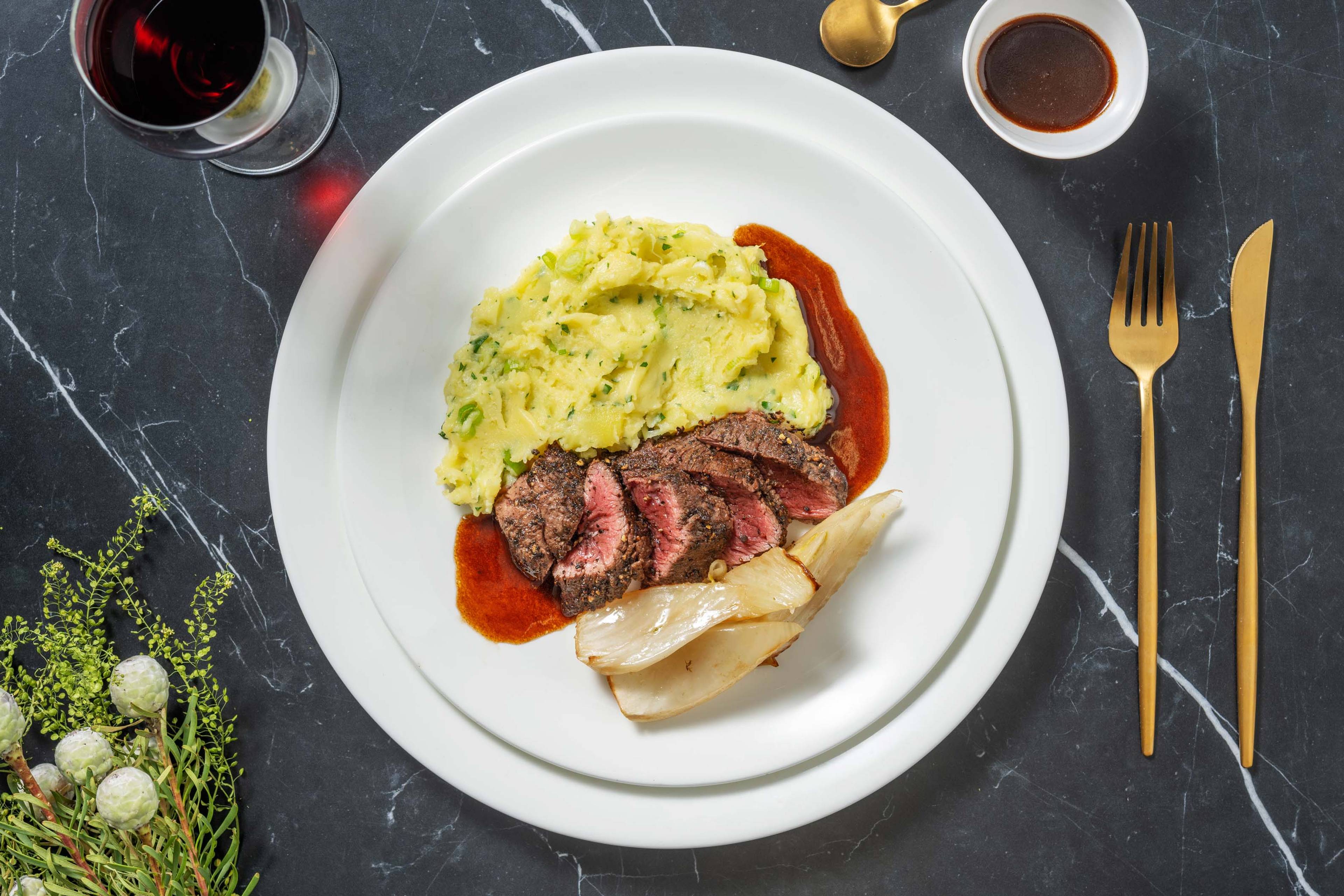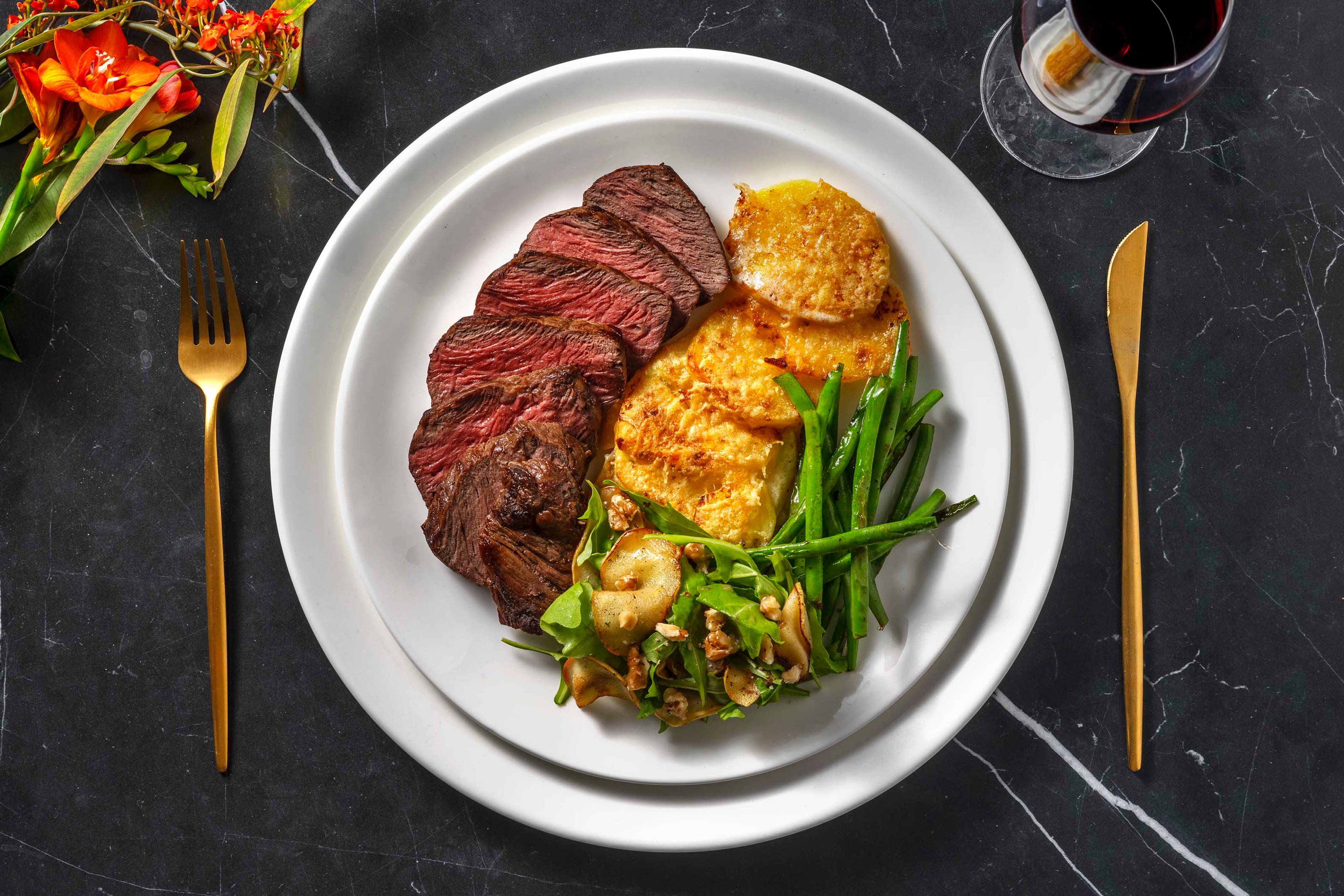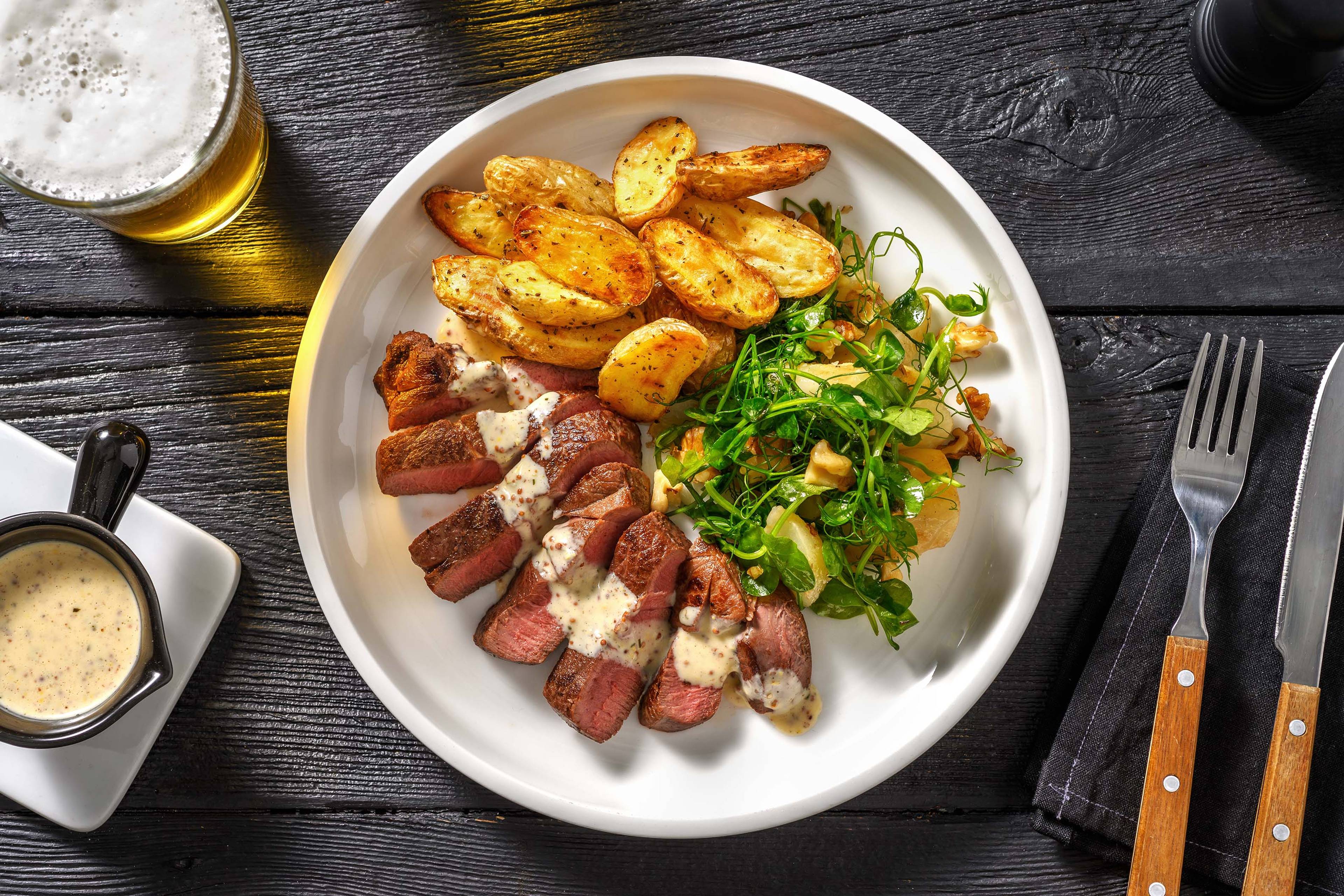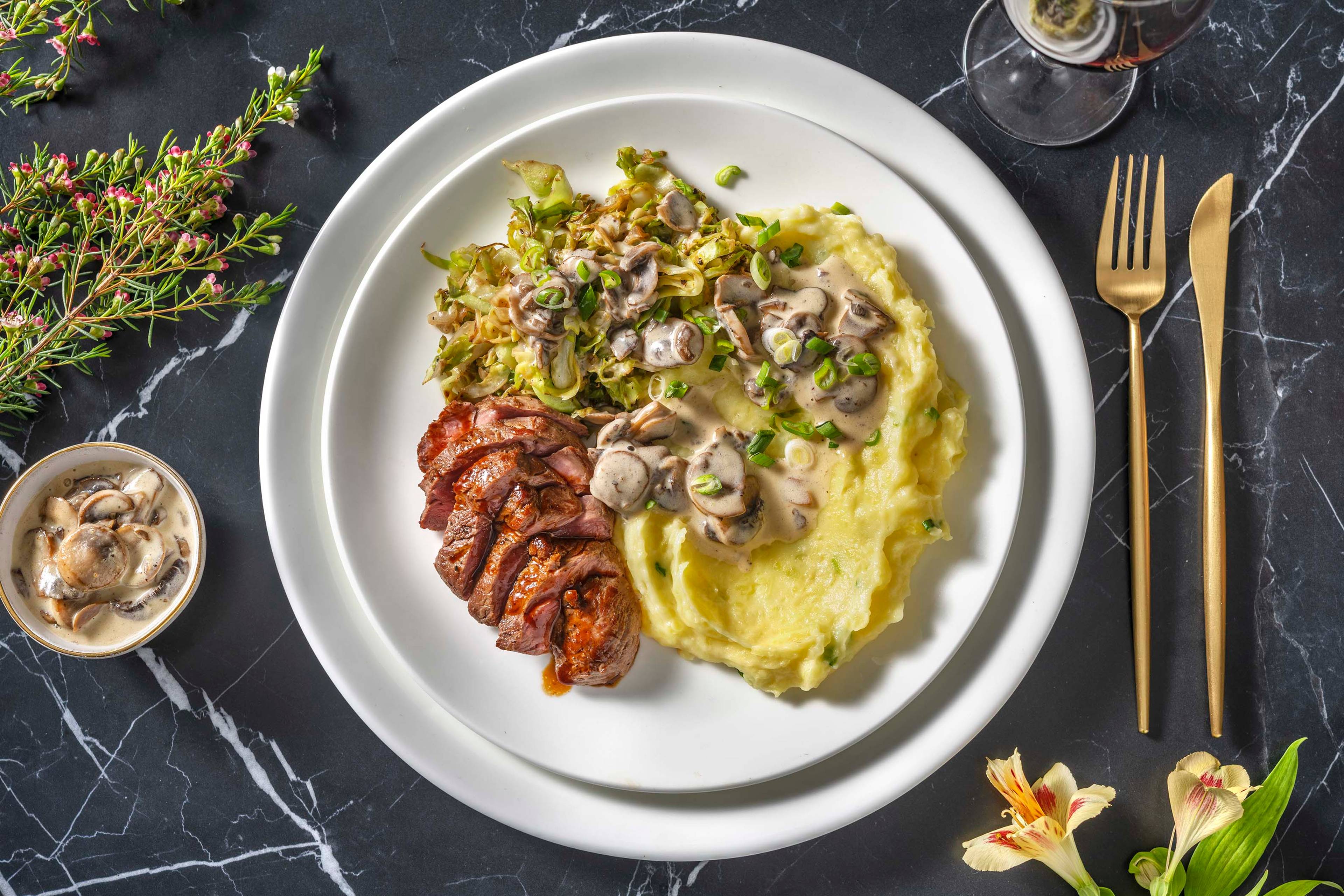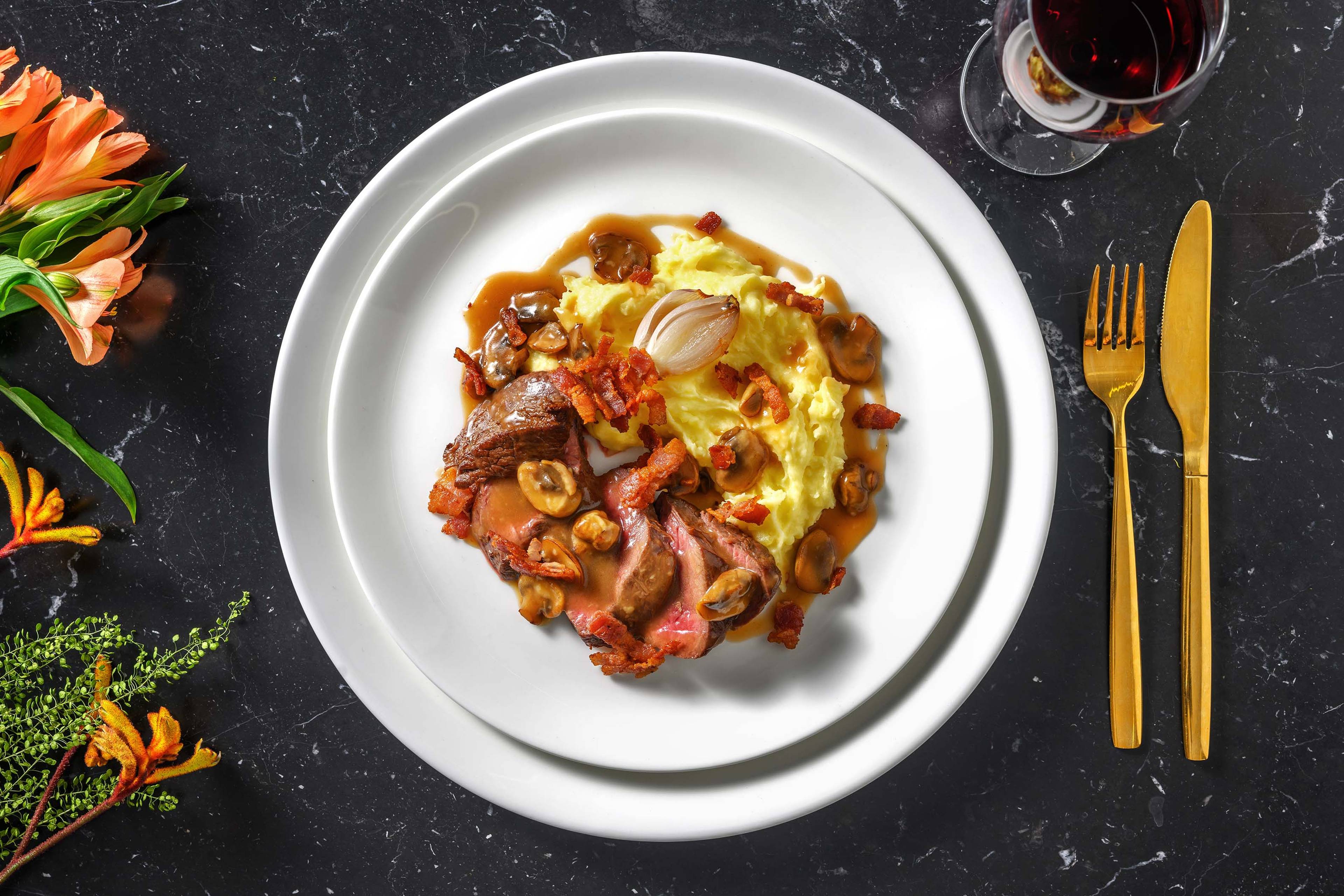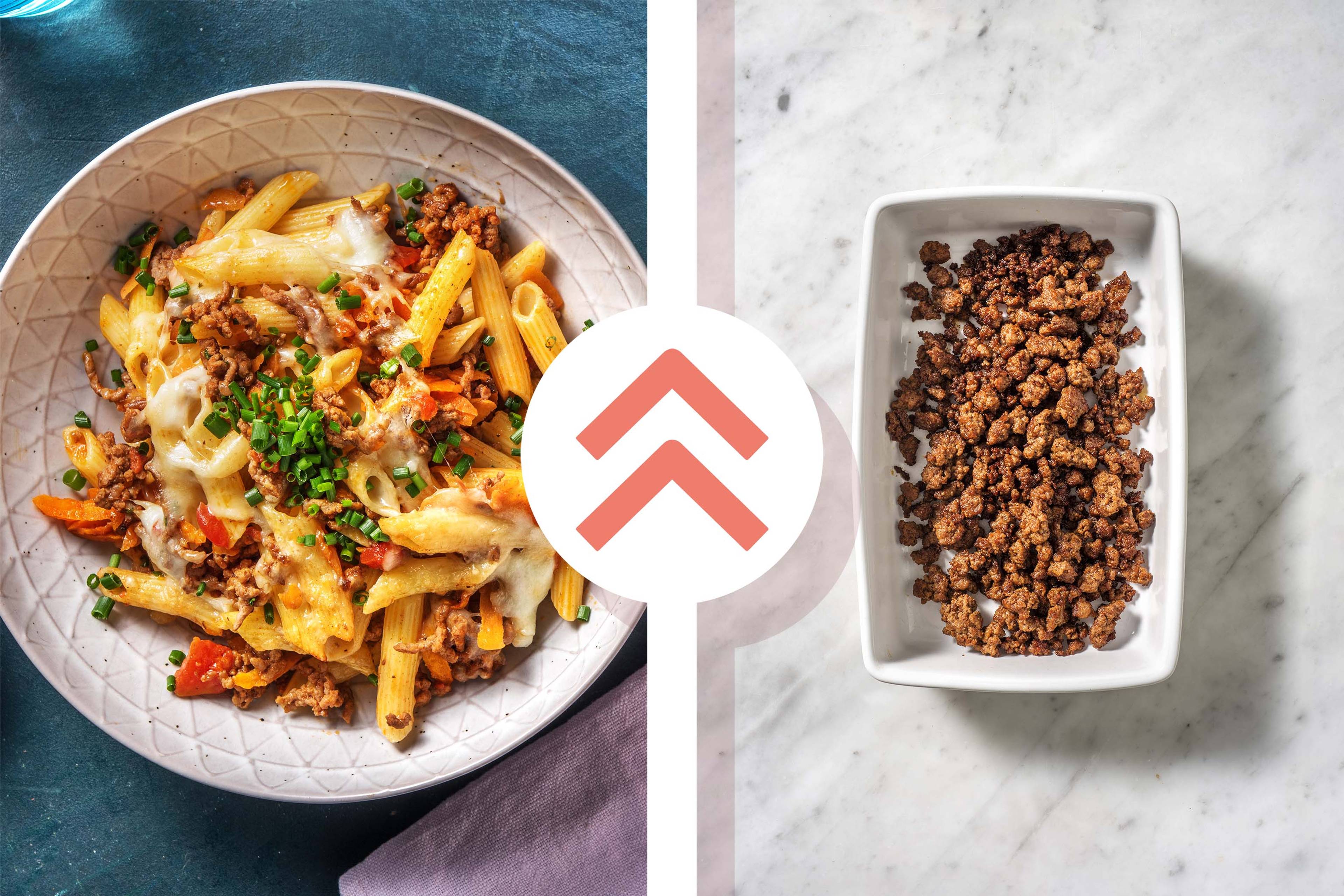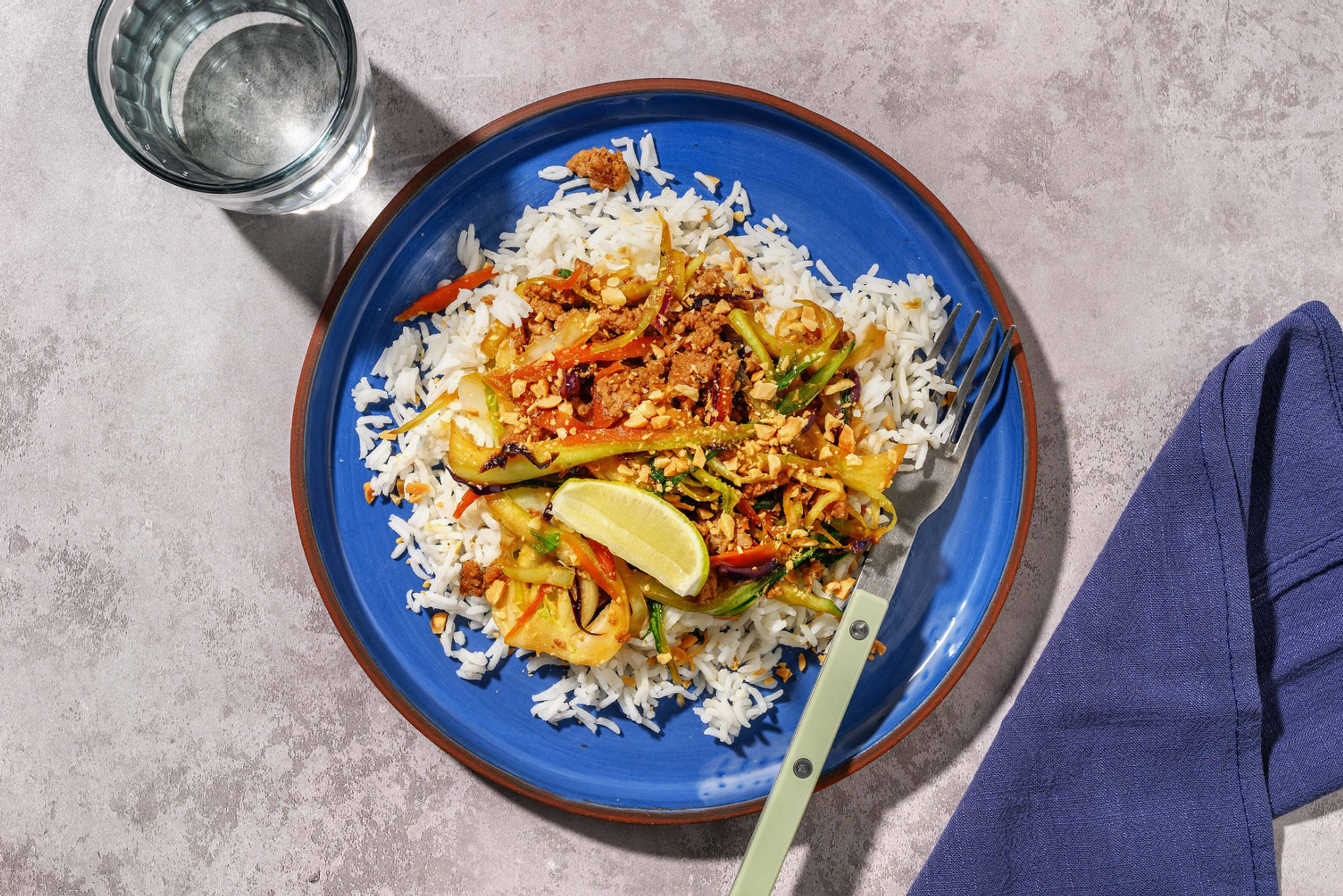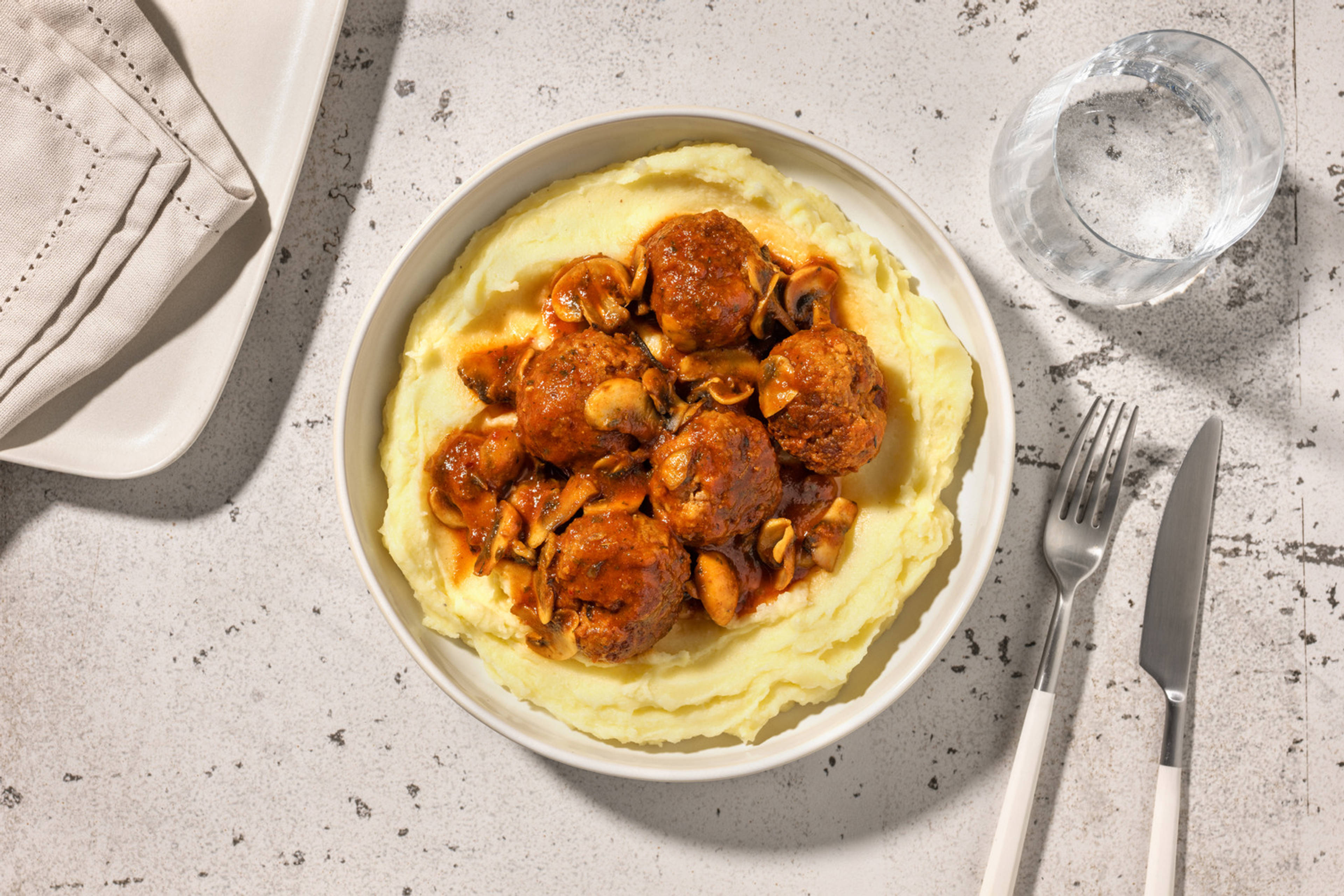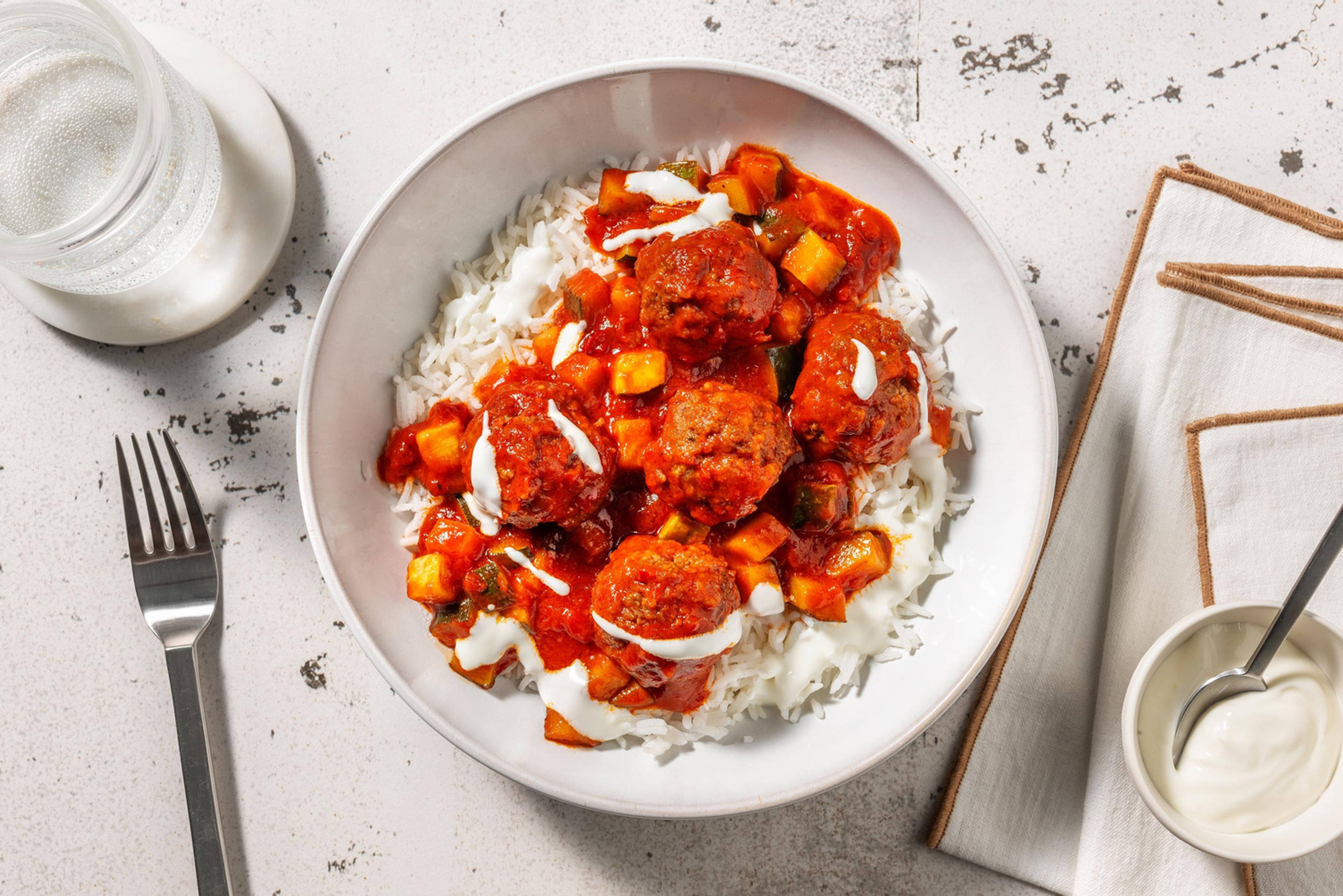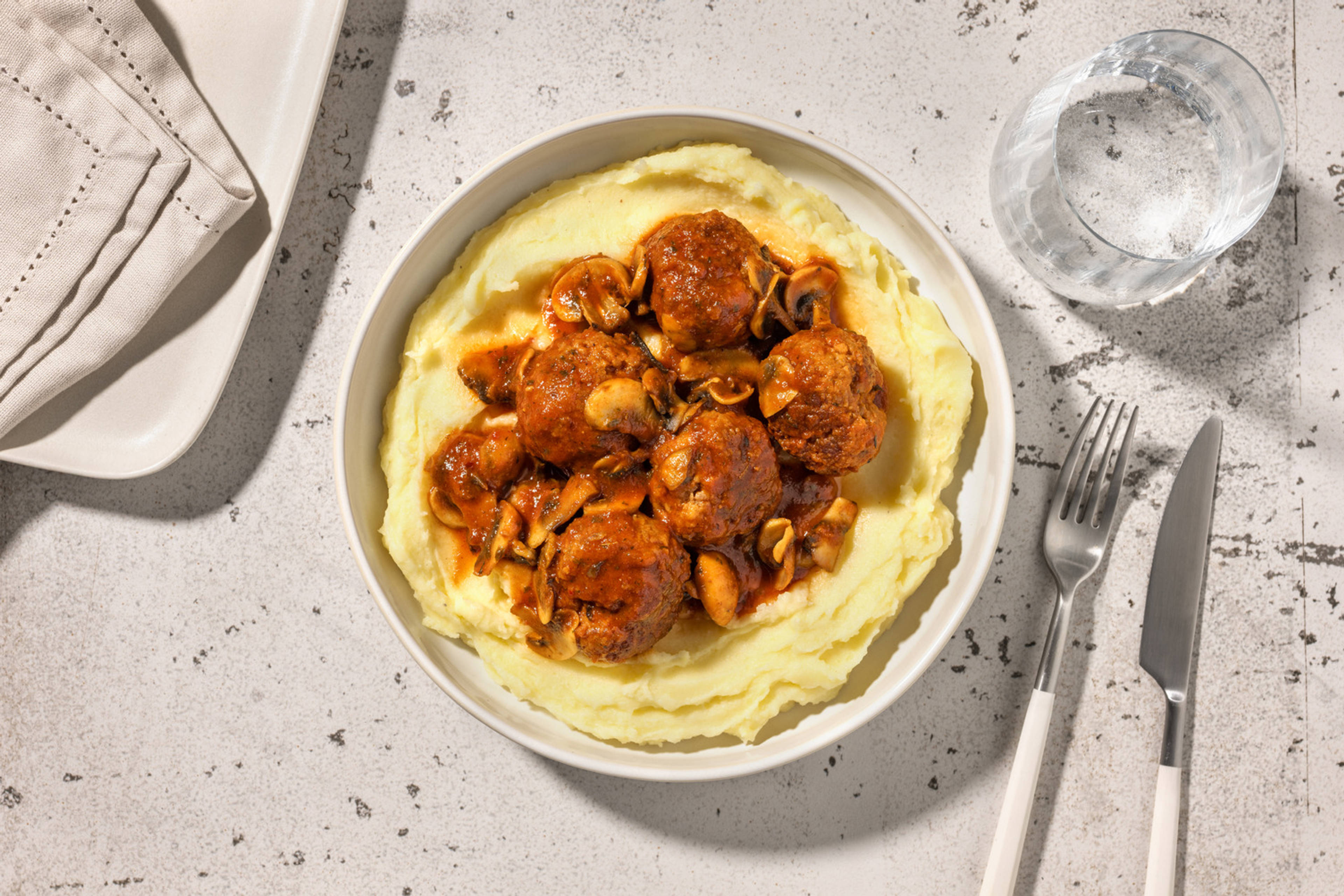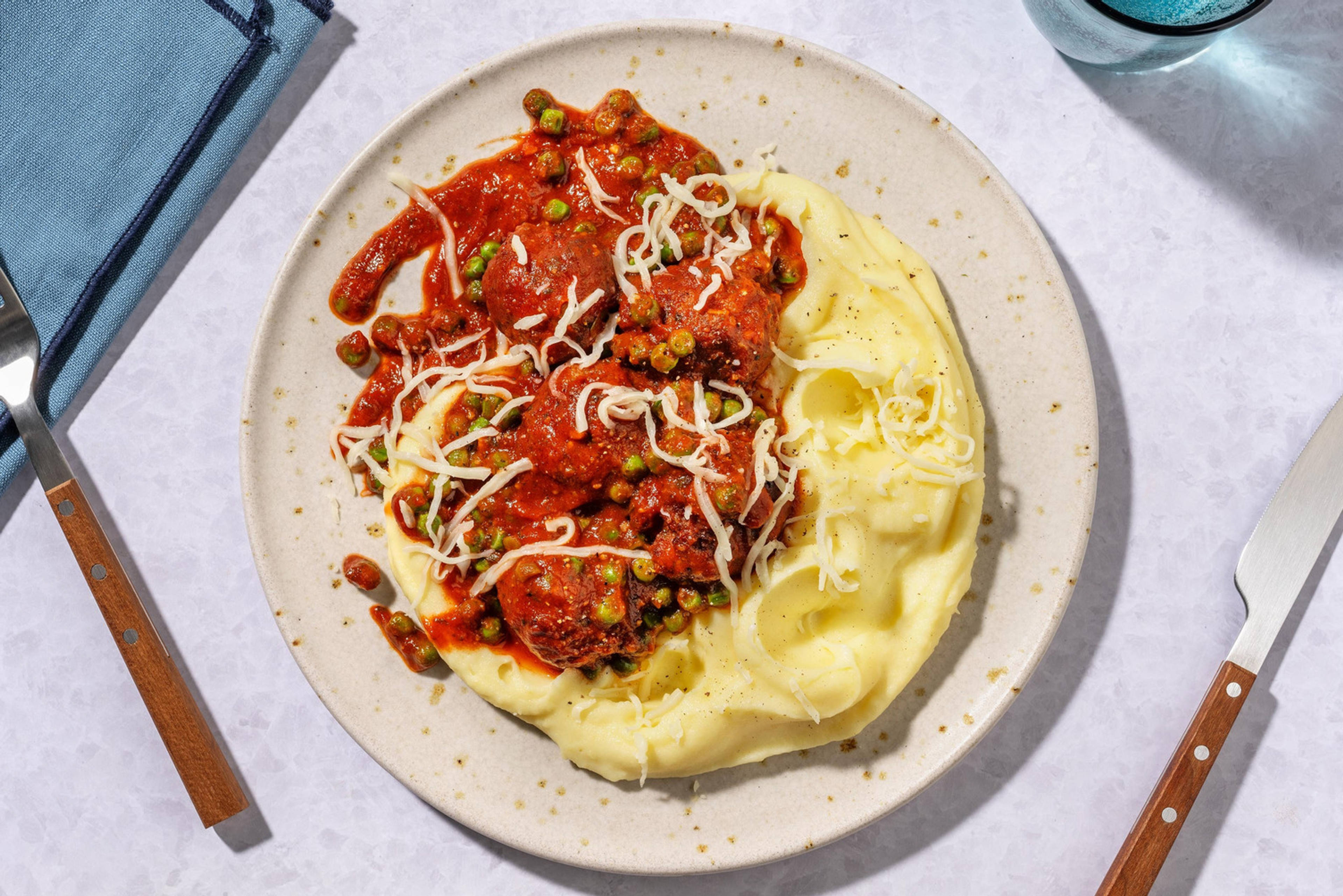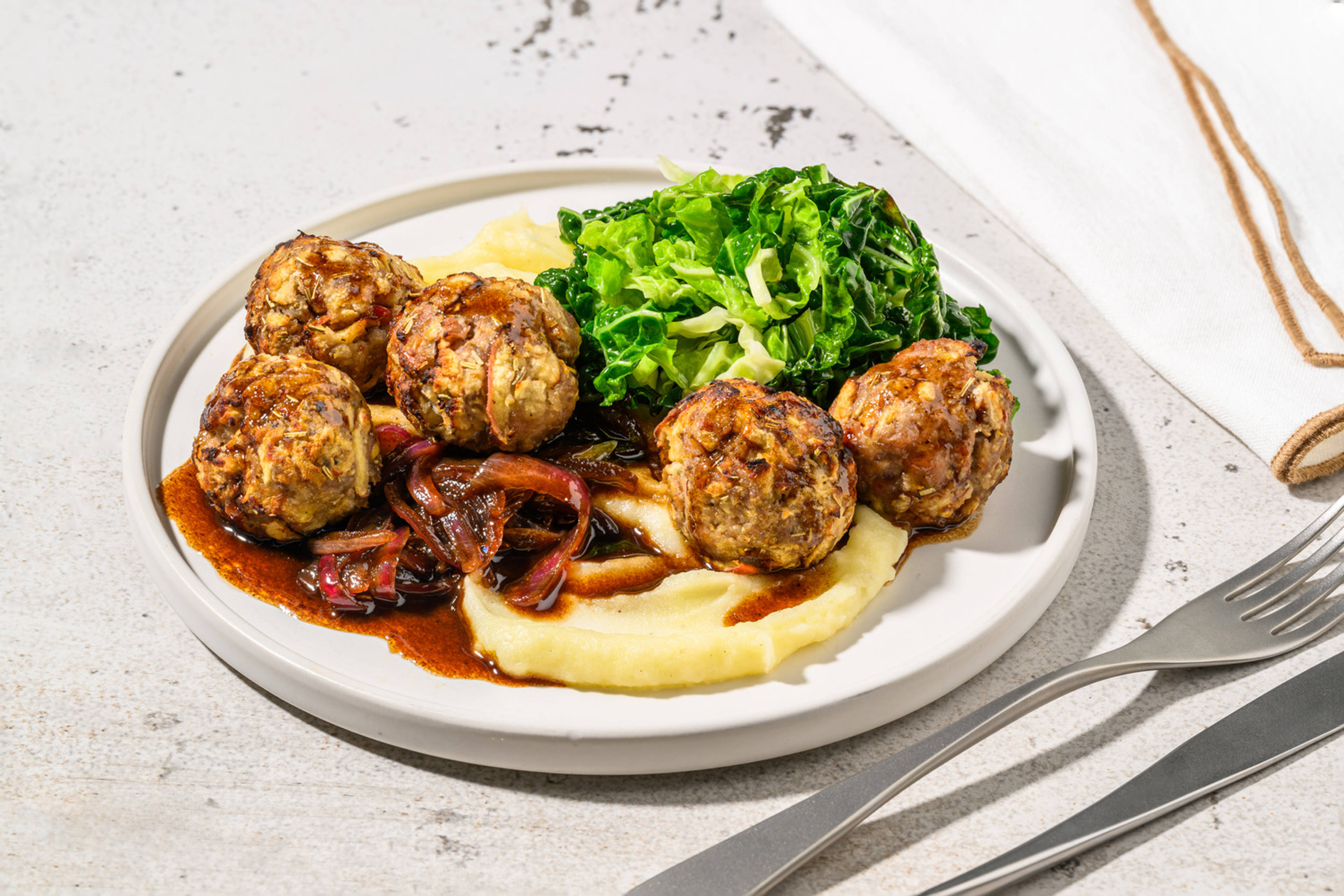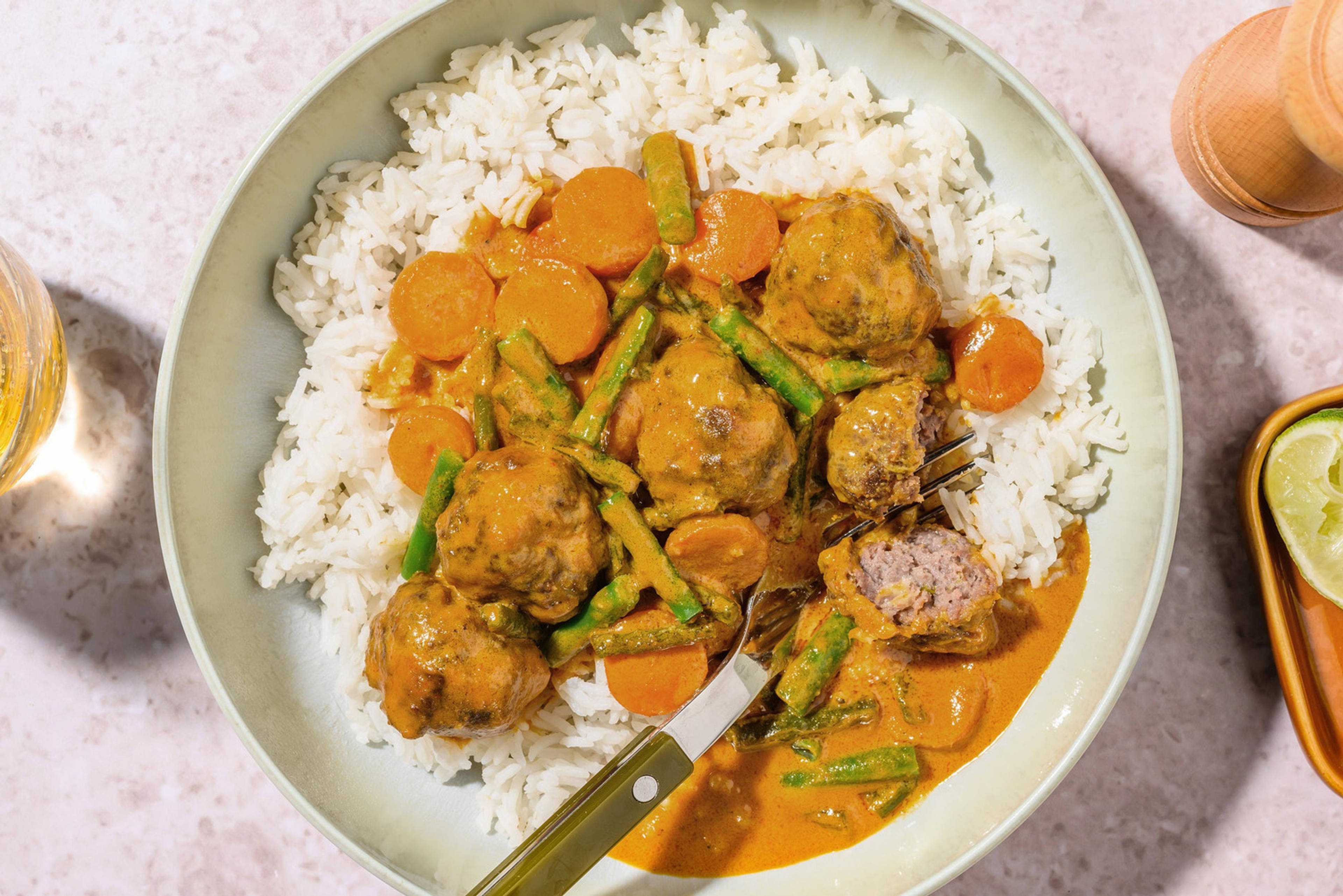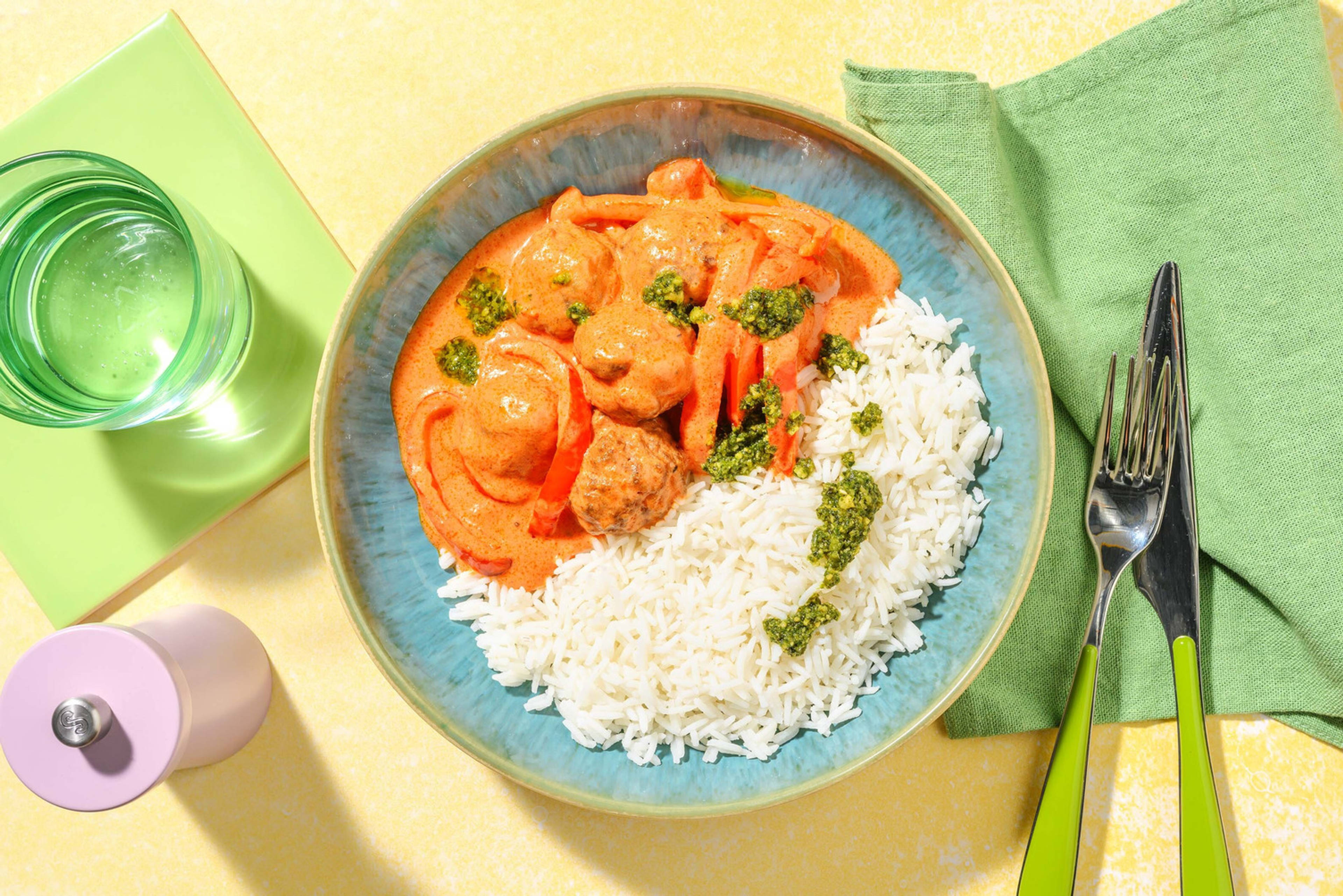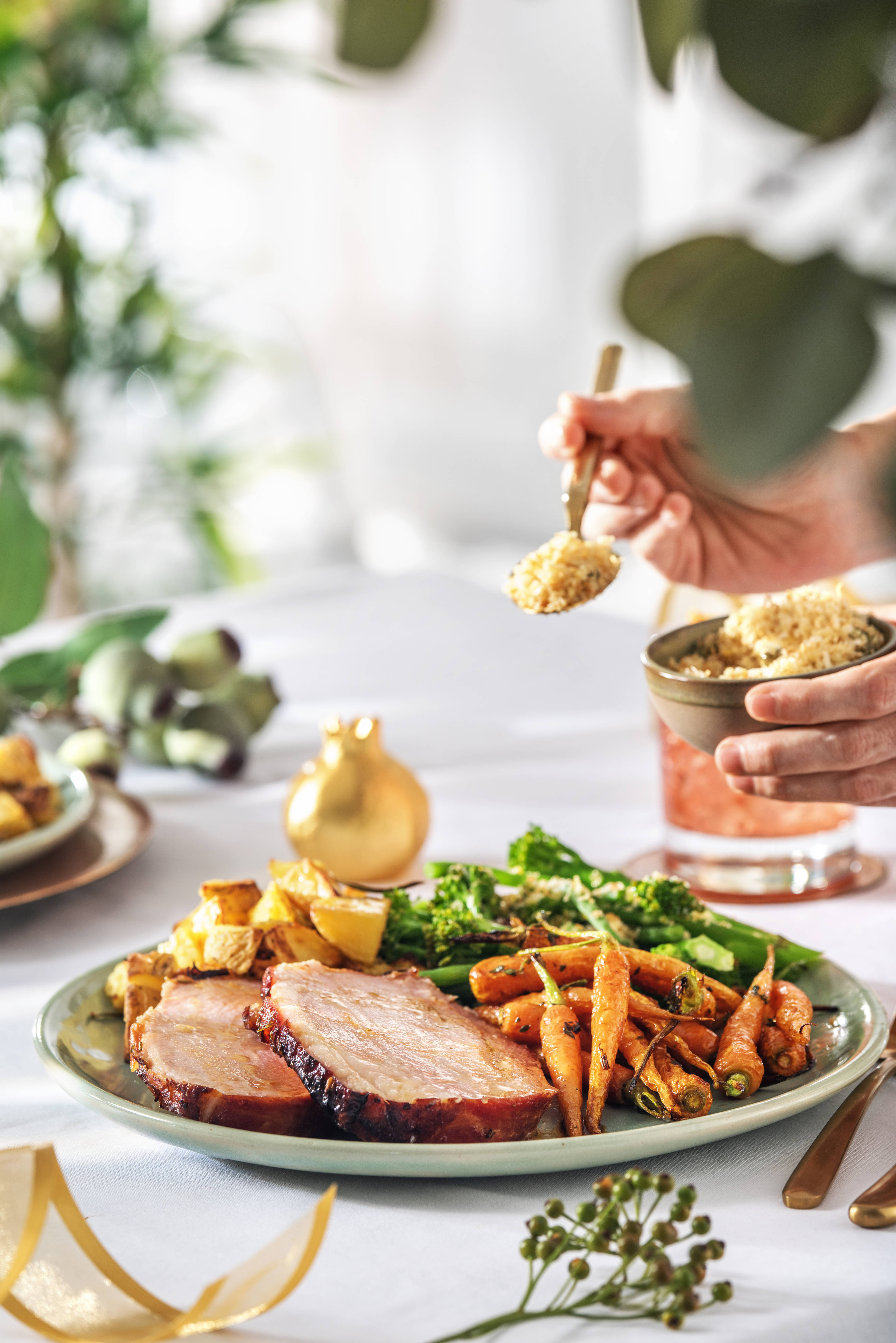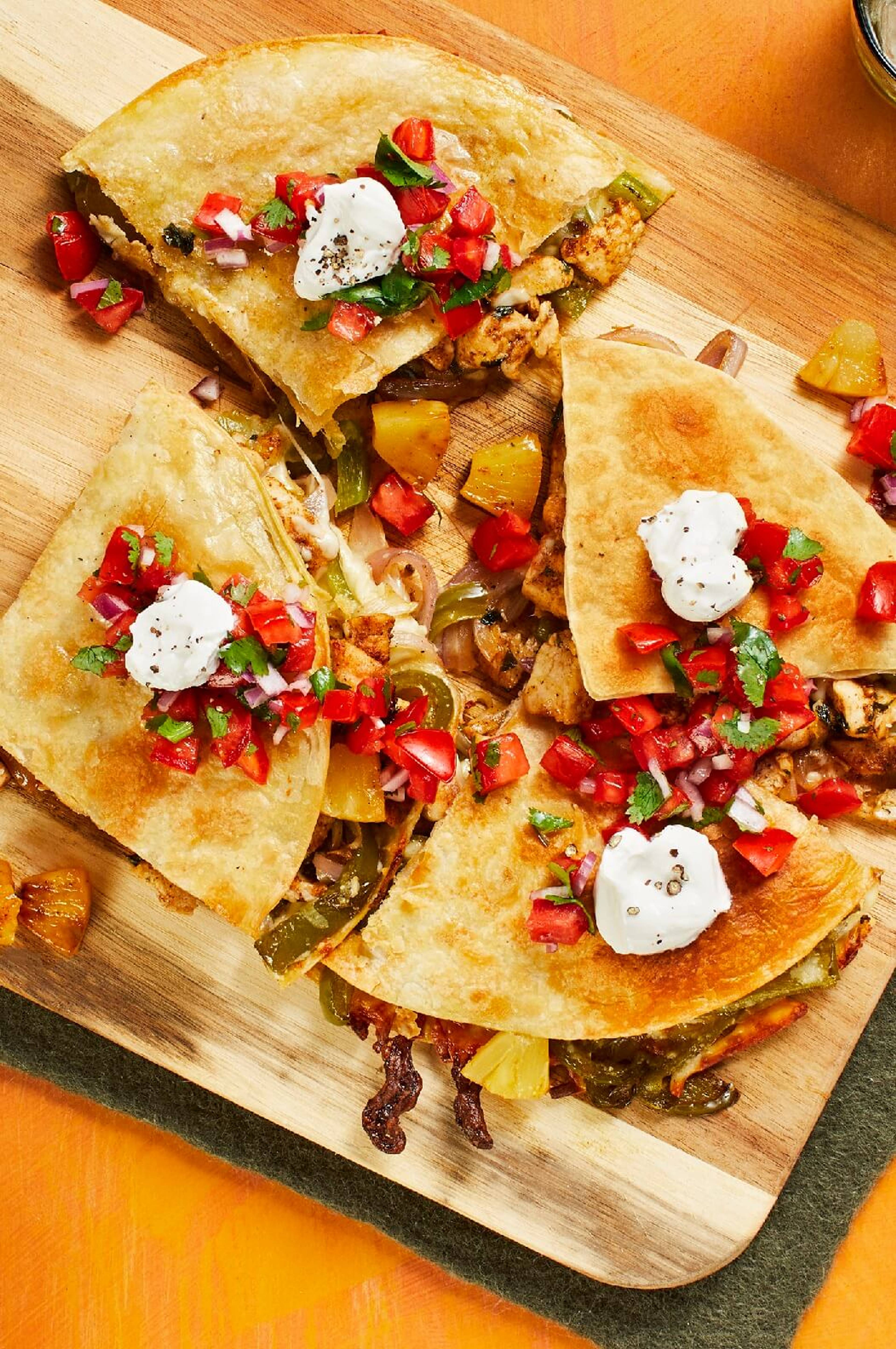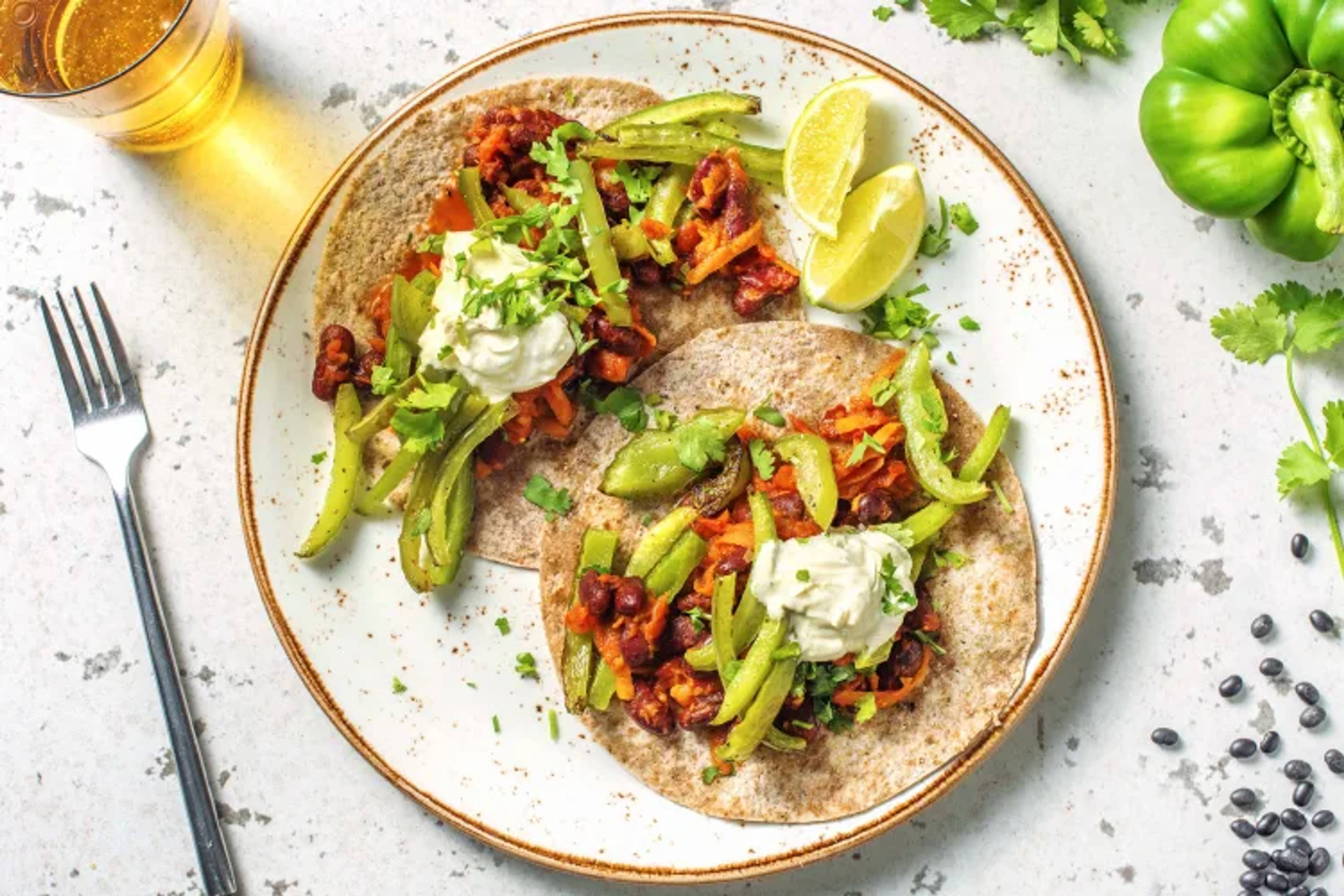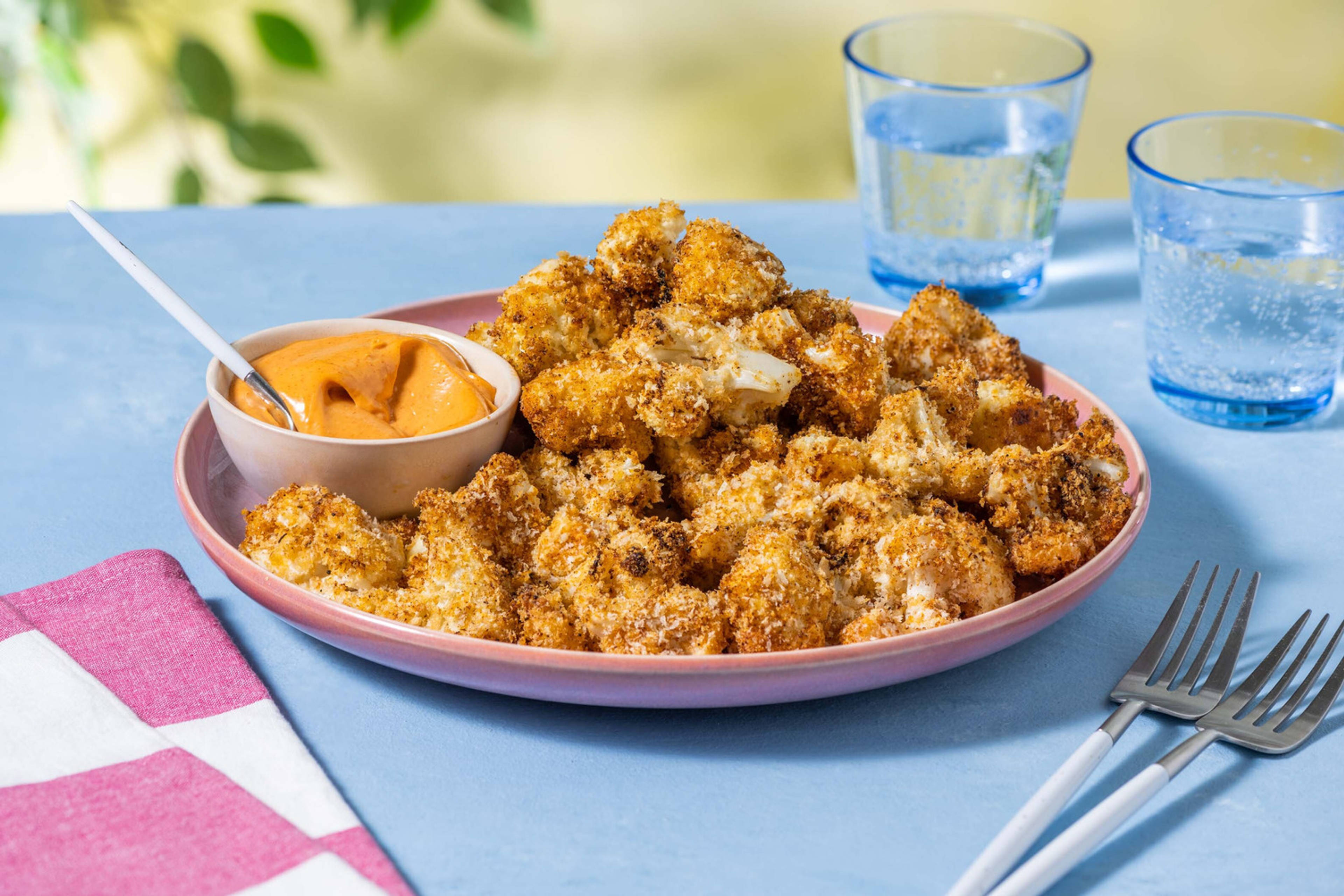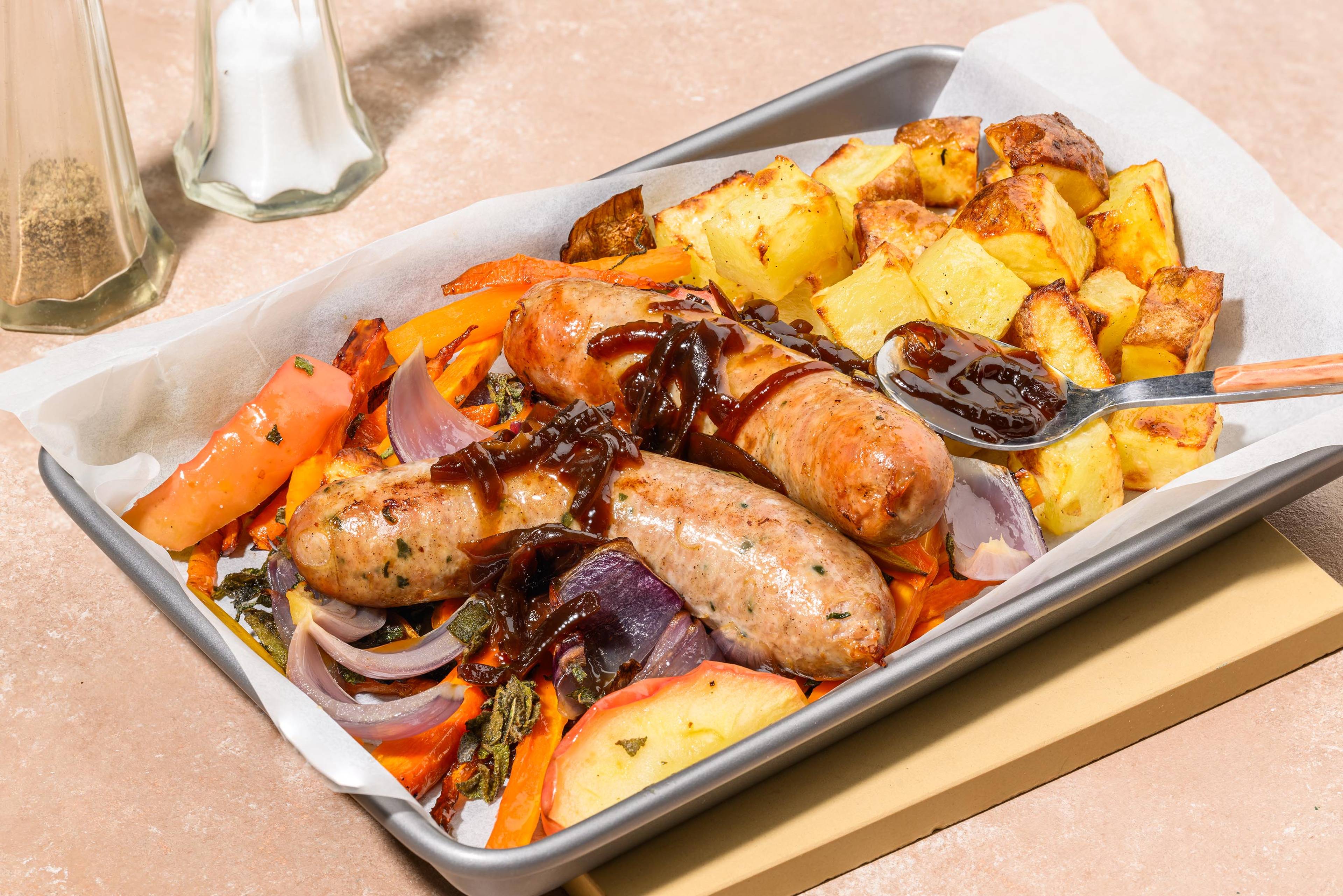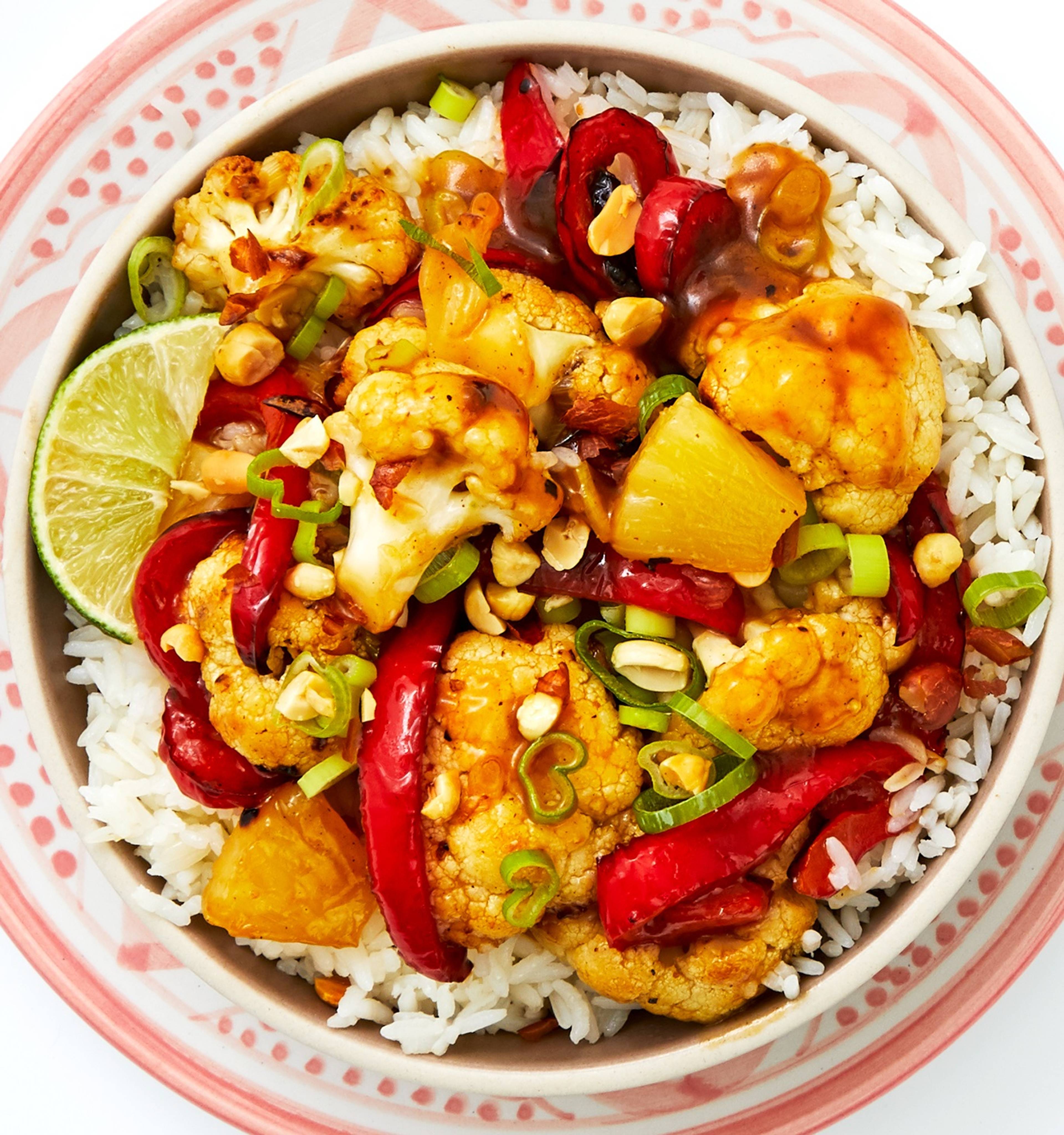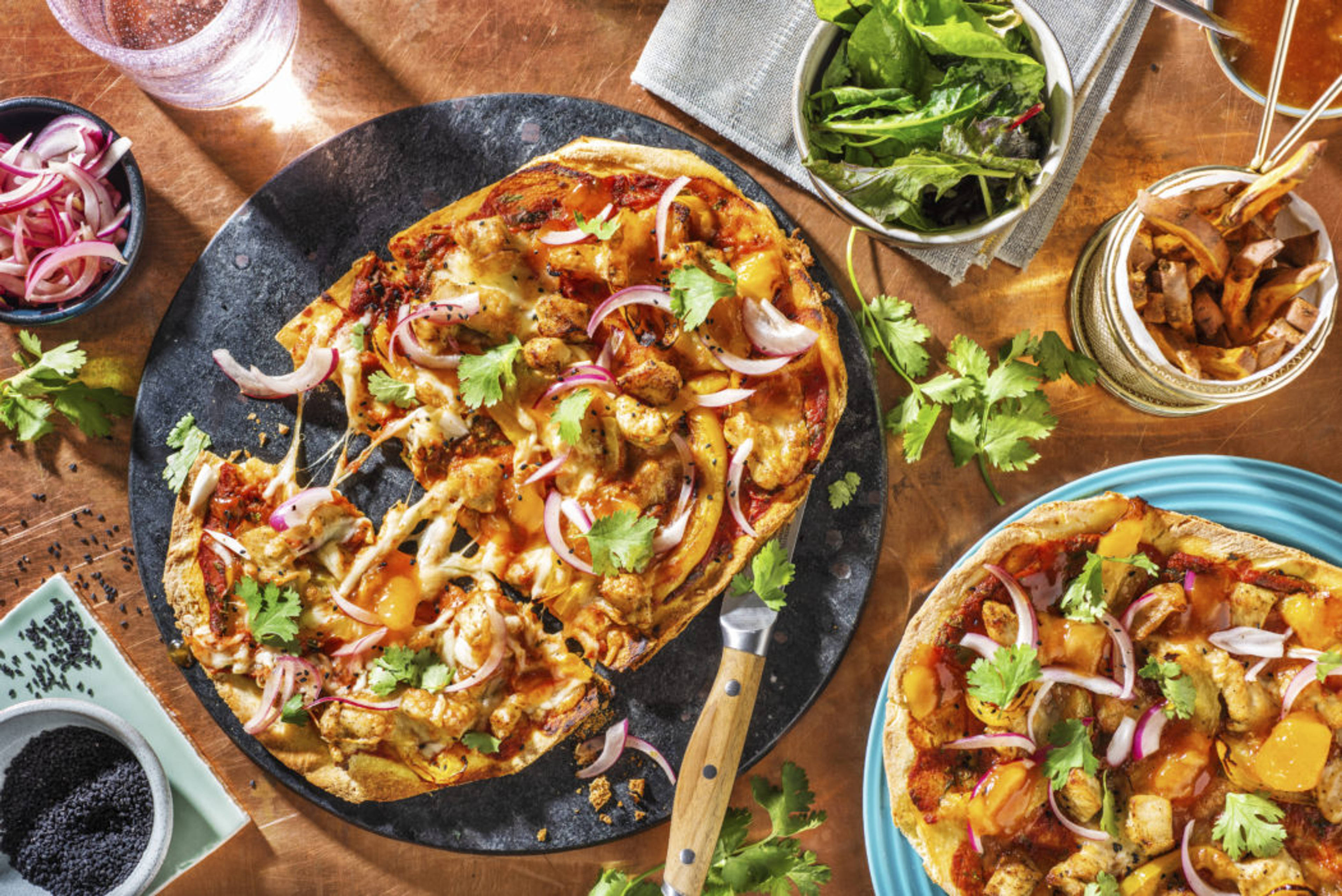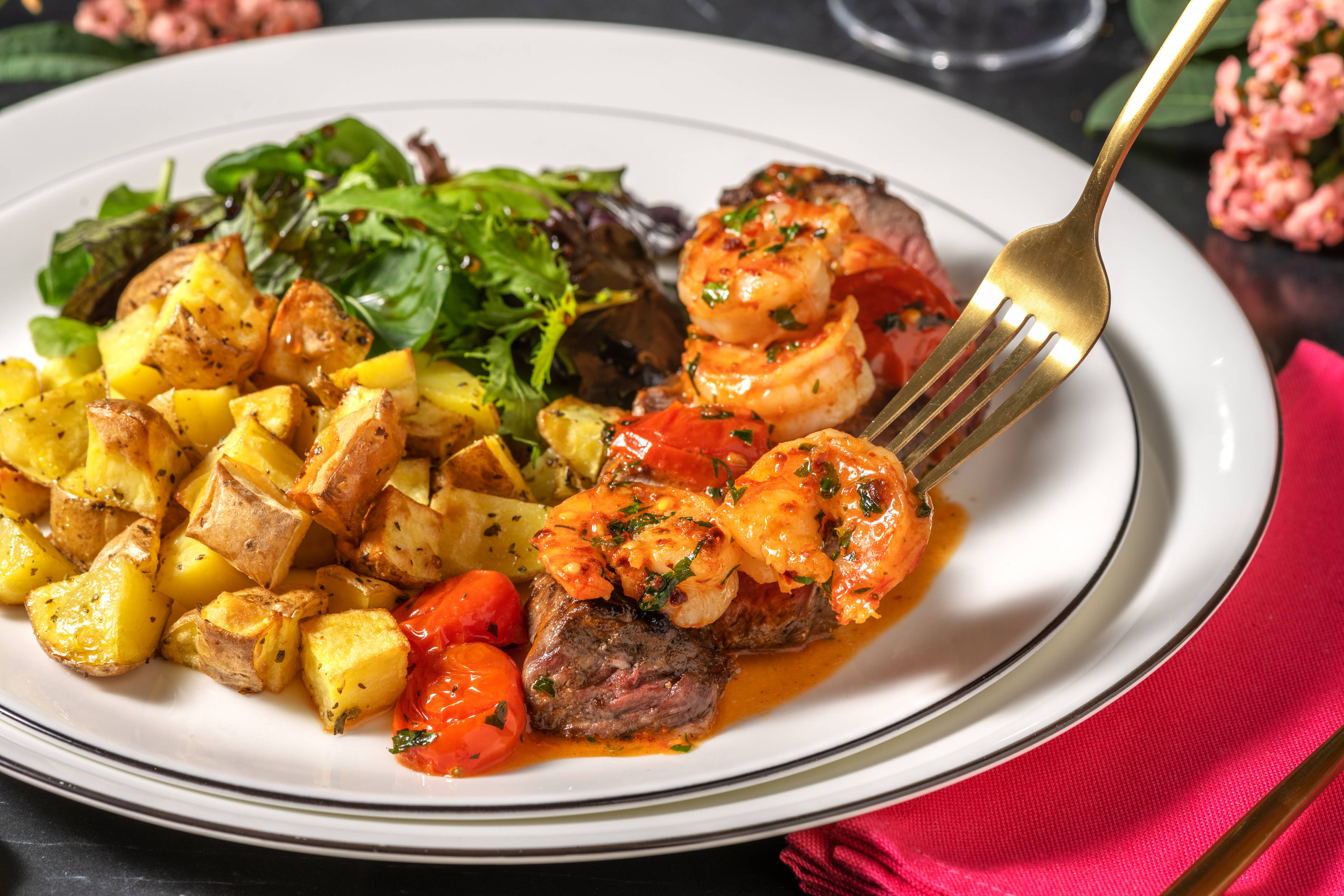Meat Recipes and Delicious Meat Dishes
Make no mis-'steak' our meat recipes are full of flavour and, when paired with complimentary side dishes, these meat recipes offer an exciting way to up your protein intake and cook up a storm.
Find Meat Recipes from HelloFresh
Red Meat Recipes - Including Beef and Lamb
You don't have to be a culinary expert to craft delicious dishes designed around succulent pieces of red meat - not when you're cooking with a HelloFresh recipe.Further Red Meat Recipes - Including Beef and Lamb
Poultry and White Meat Recipes
Discover how versatile white meat can be; whether you're bulking your protein, feeding the family or looking for new ways to enjoy chicken or turkey then discover something different with our white meat recipes.Further Poultry and White Meat Recipes
Game Food and Recipes
Game meats are an excellent alternative protein to break up dinnertime monotony. If you’re looking for something different to serve for dinner, check out our recipes with game meat.Further Game Food and Recipes
Mince Meat Recipes
Budget-friendly and a great meat choice for a range of cuisines, mince offers adaptability ideal for all the family. Keep everyone happy with casseroles, tacos, meatballs and more and explore our mince recipes.Further Mince Meat Recipes
Meatball Recipes
A family classic, we've given meatballs the attention they deserve with our selection of meatball recipes designed and curated to provide the perfect blend of herb, flavour and spice.Further Meatball Recipes
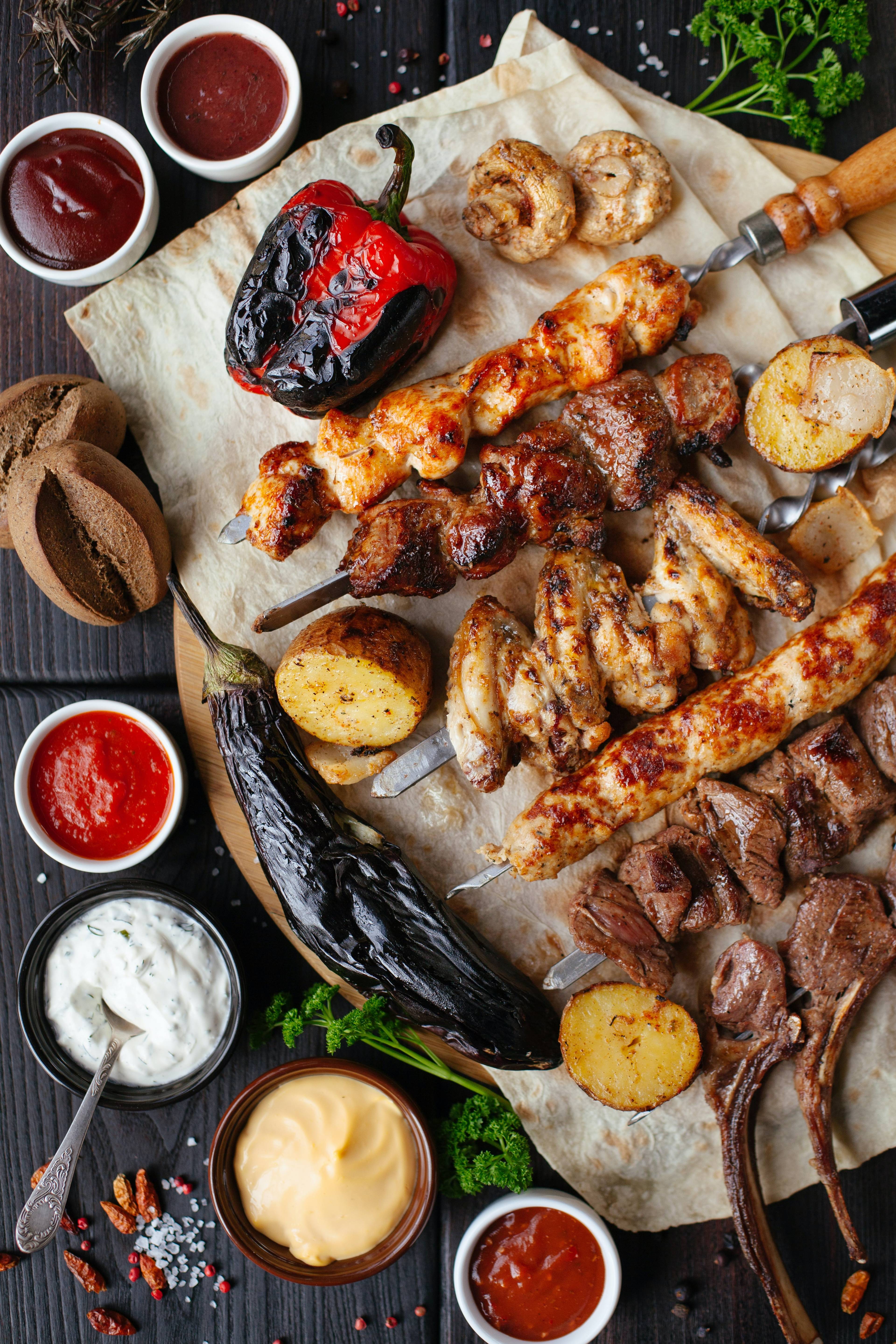
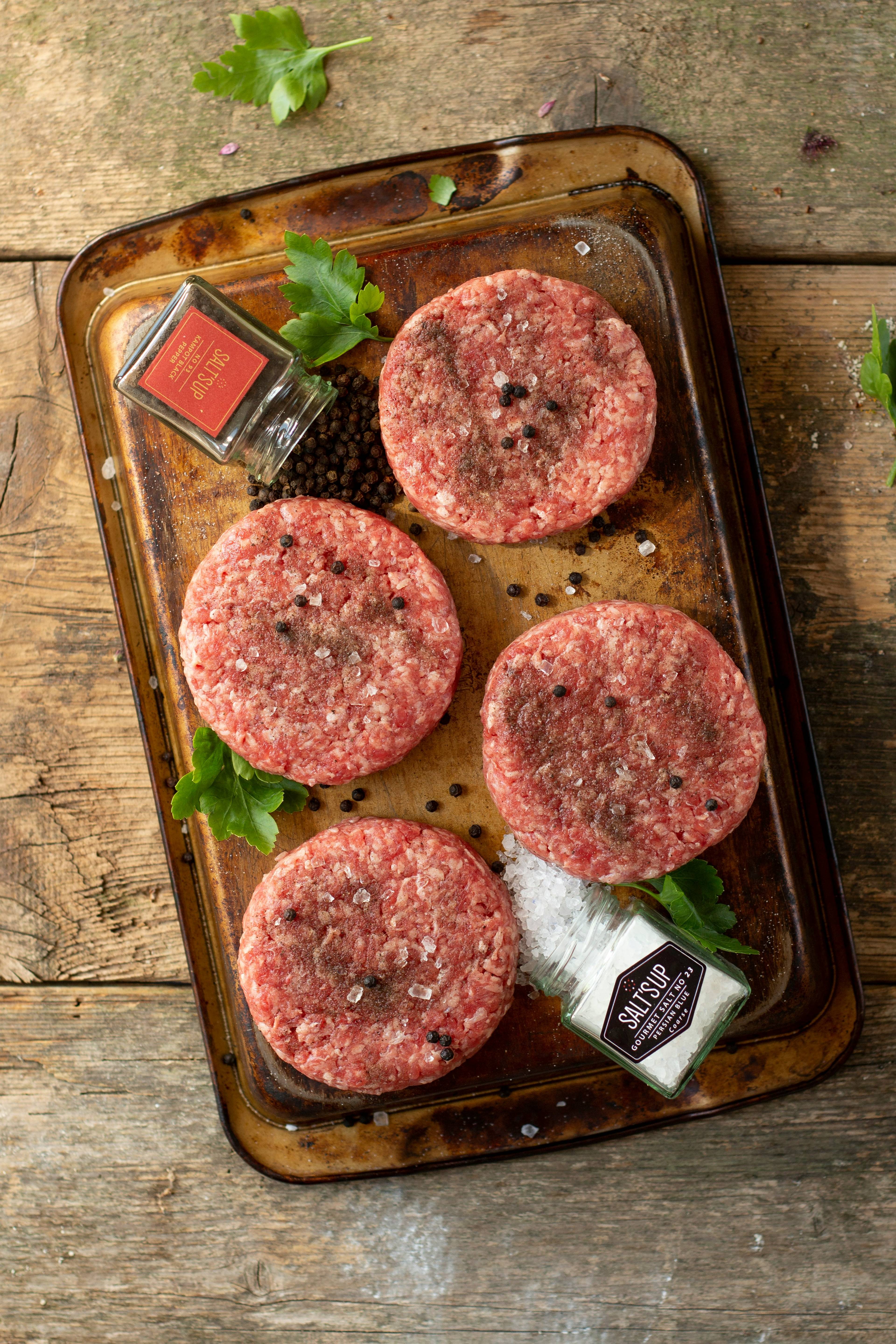
Meat Recipes: FAQs
What is red meat?
Red meat is any meat that is red when raw, but not always. Scientifically speaking, red meat is defined by the level of myoglobin protein found within the meat. This means that pork, which is pale in colour when raw, is sometimes classed as red meat. Red meats include beef (including burgers), lamb and mutton, veal, venison, goat and pork (including sausages and bacon).
What is white meat?
White meat is the opposite of red. It is pale in colour when raw and after cooking. In traditional gastronomy, this also includes milk-fed mammals. As with red meat, the low levels of myoglobin protein are a factor in whether it is a white meat. Pork is often referred to as white meat or red meat. White meats include chicken, turkey and duck.
How do you store meat?
Meat should be stored at the bottom of your fridge as this is the coldest part of the fridge and also helps prevent any juices from leaking onto other produce in the fridge. Keep your meat in its original packaging until it is first opened, then place it in an airtight container.
Recipes by Preferences and Dietary Lifestyle
Get excited every evening!
+6
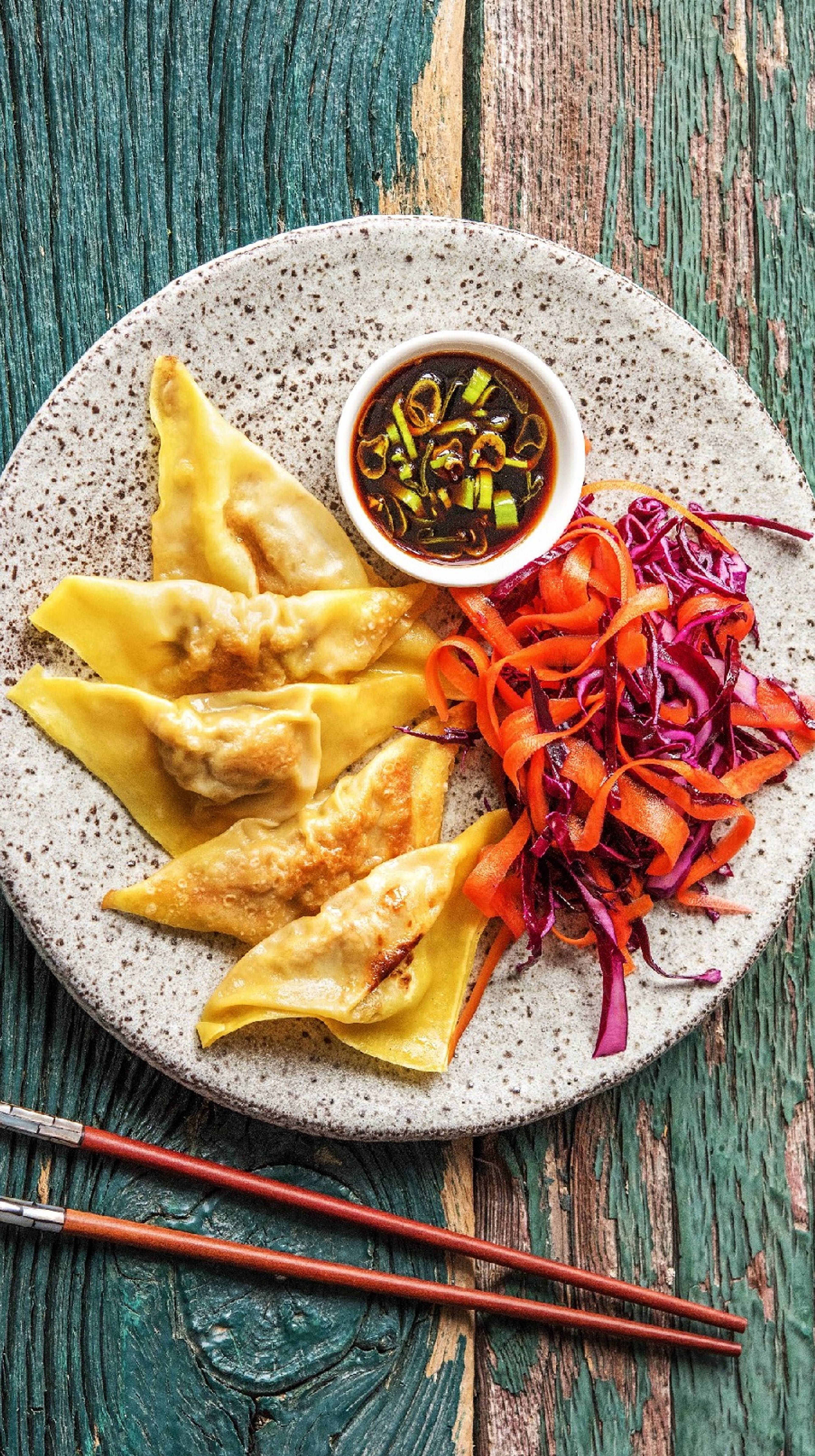


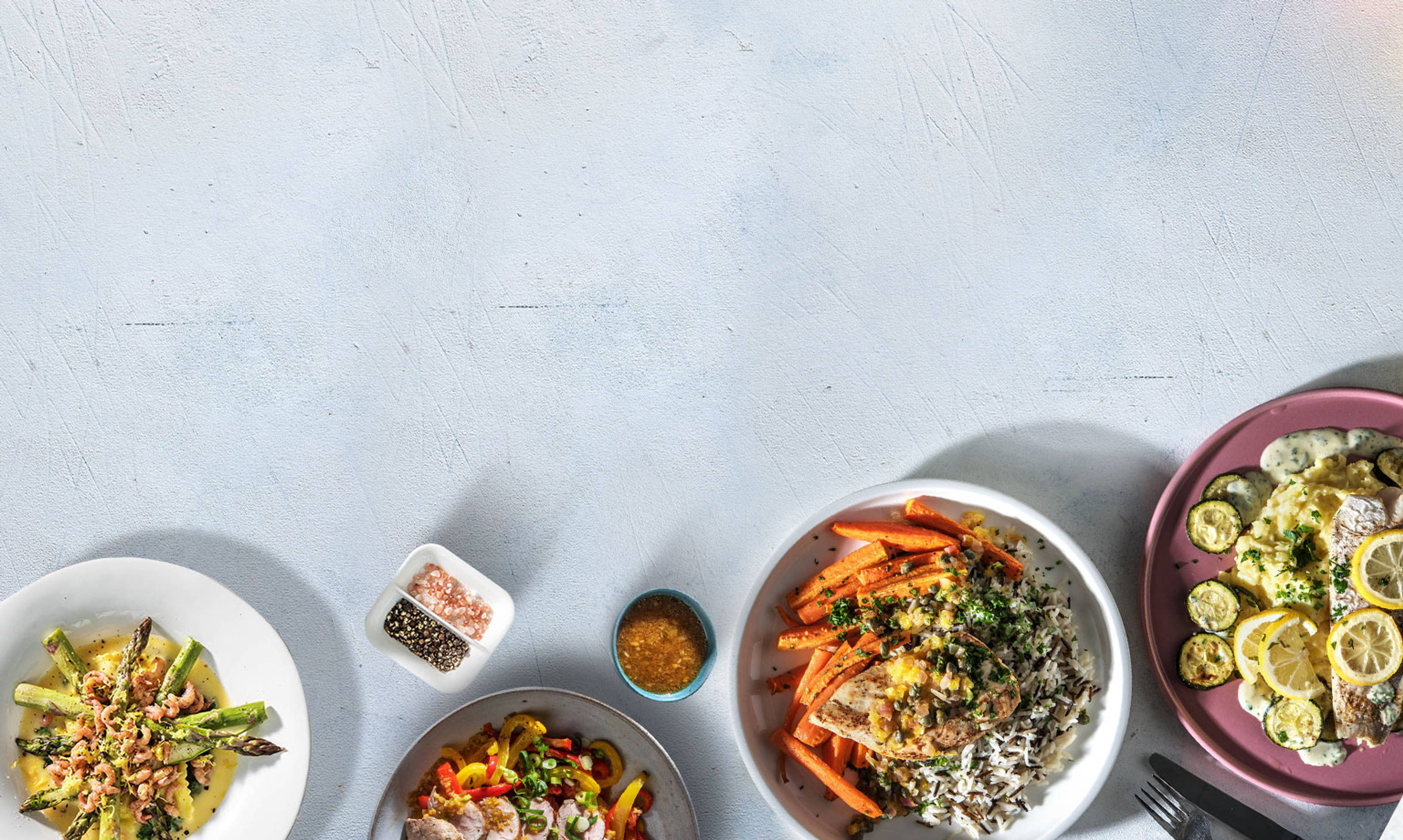
Recipes you'll love!
Get delicious recipes and all ingredients fresh on your doorstep every week!
